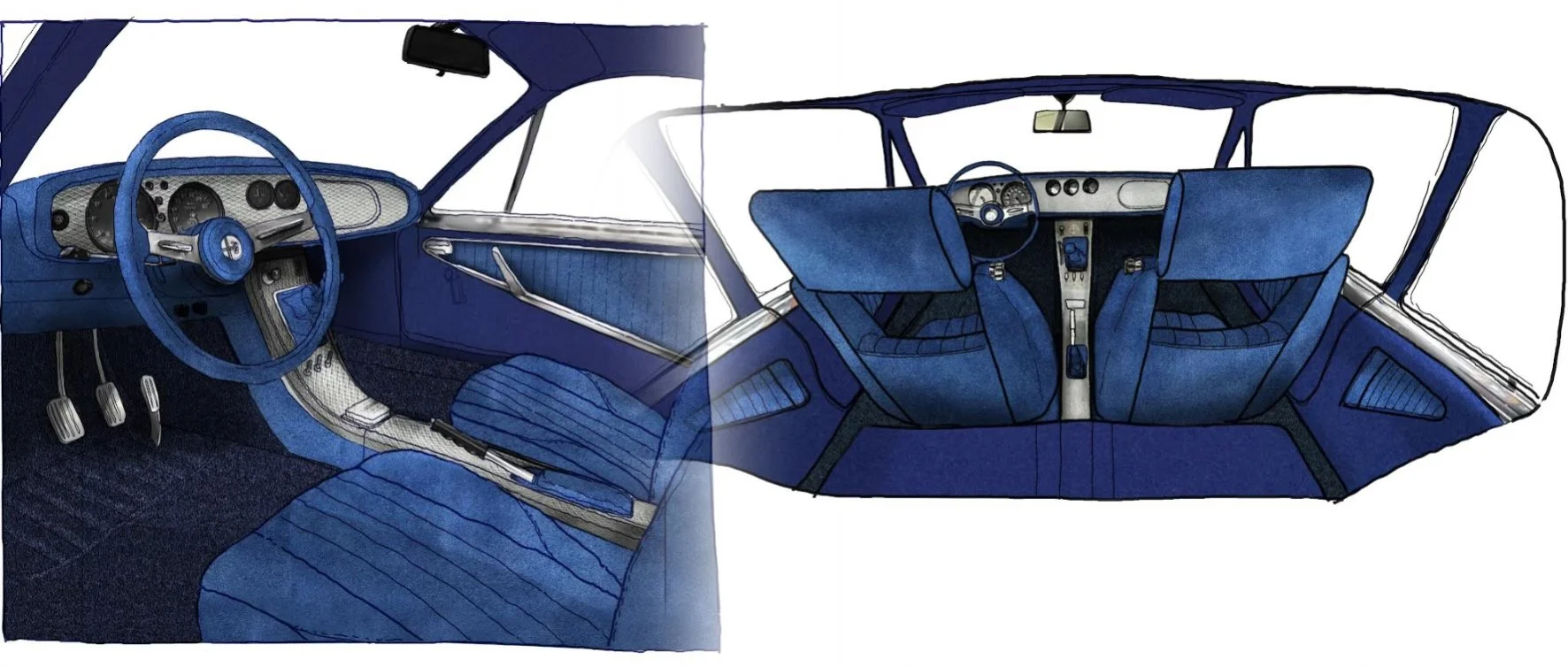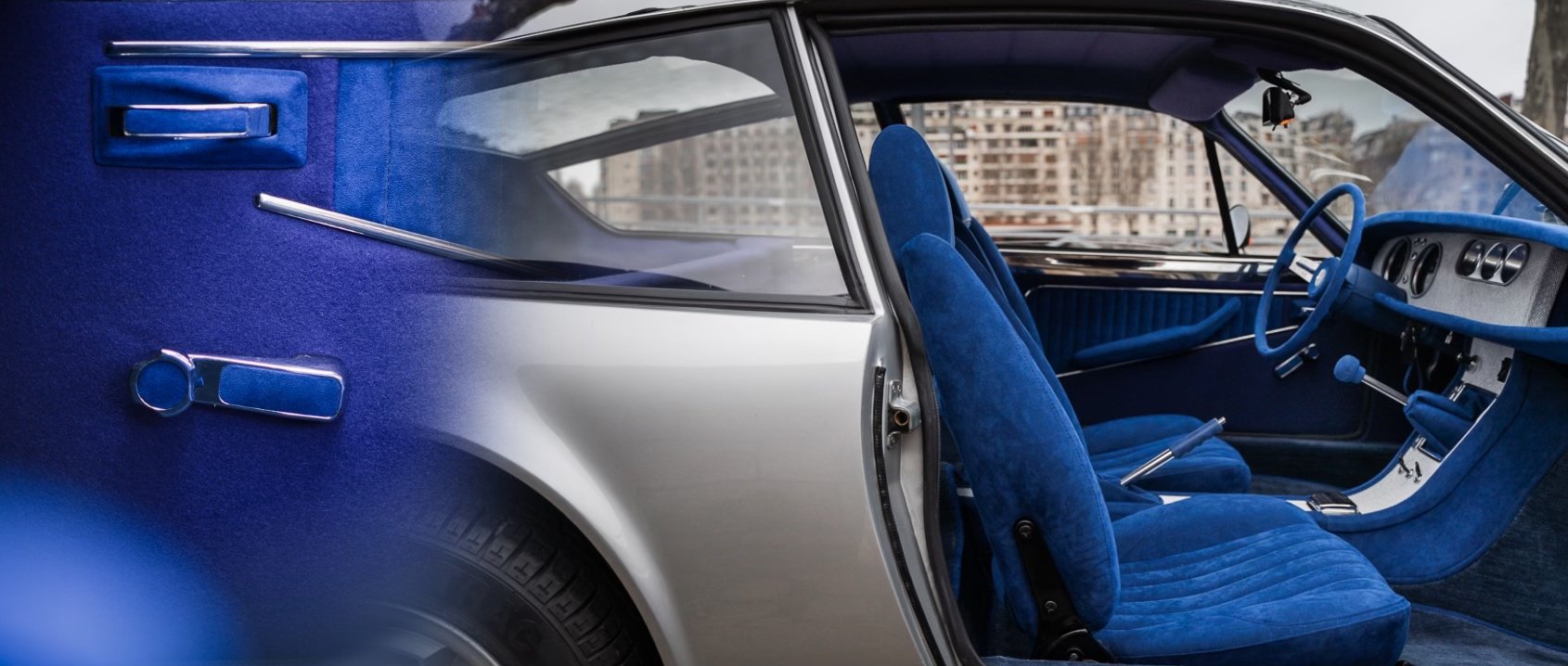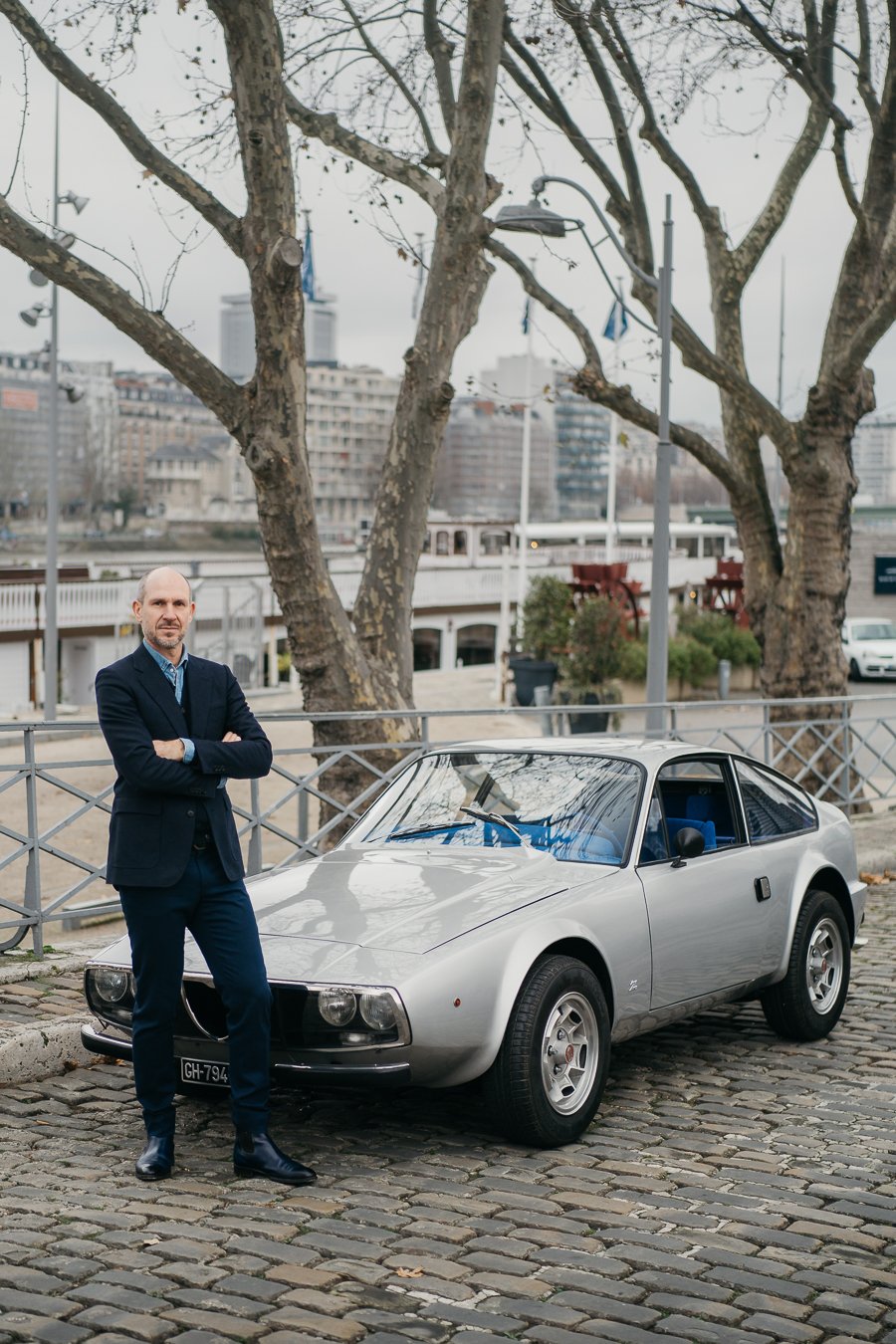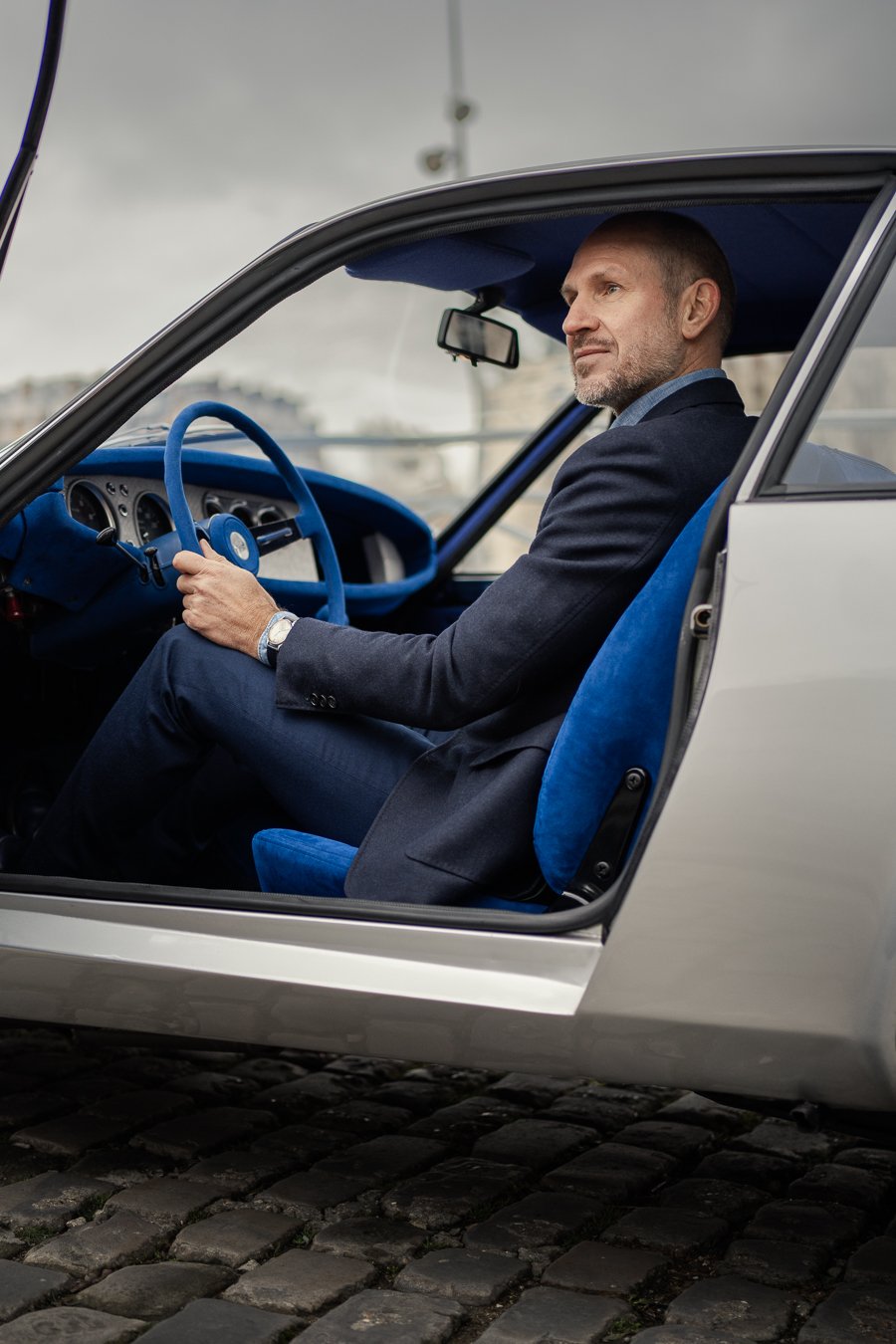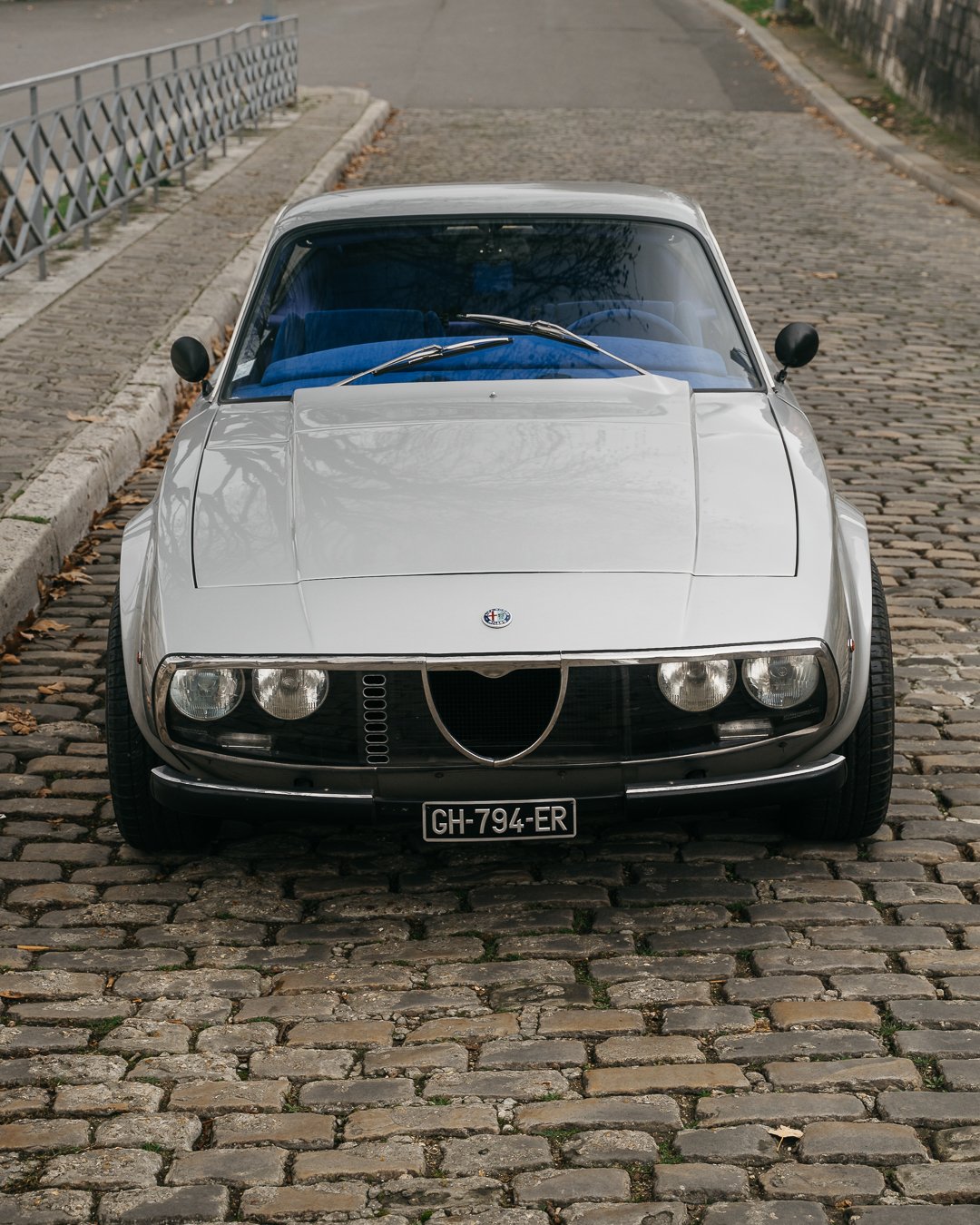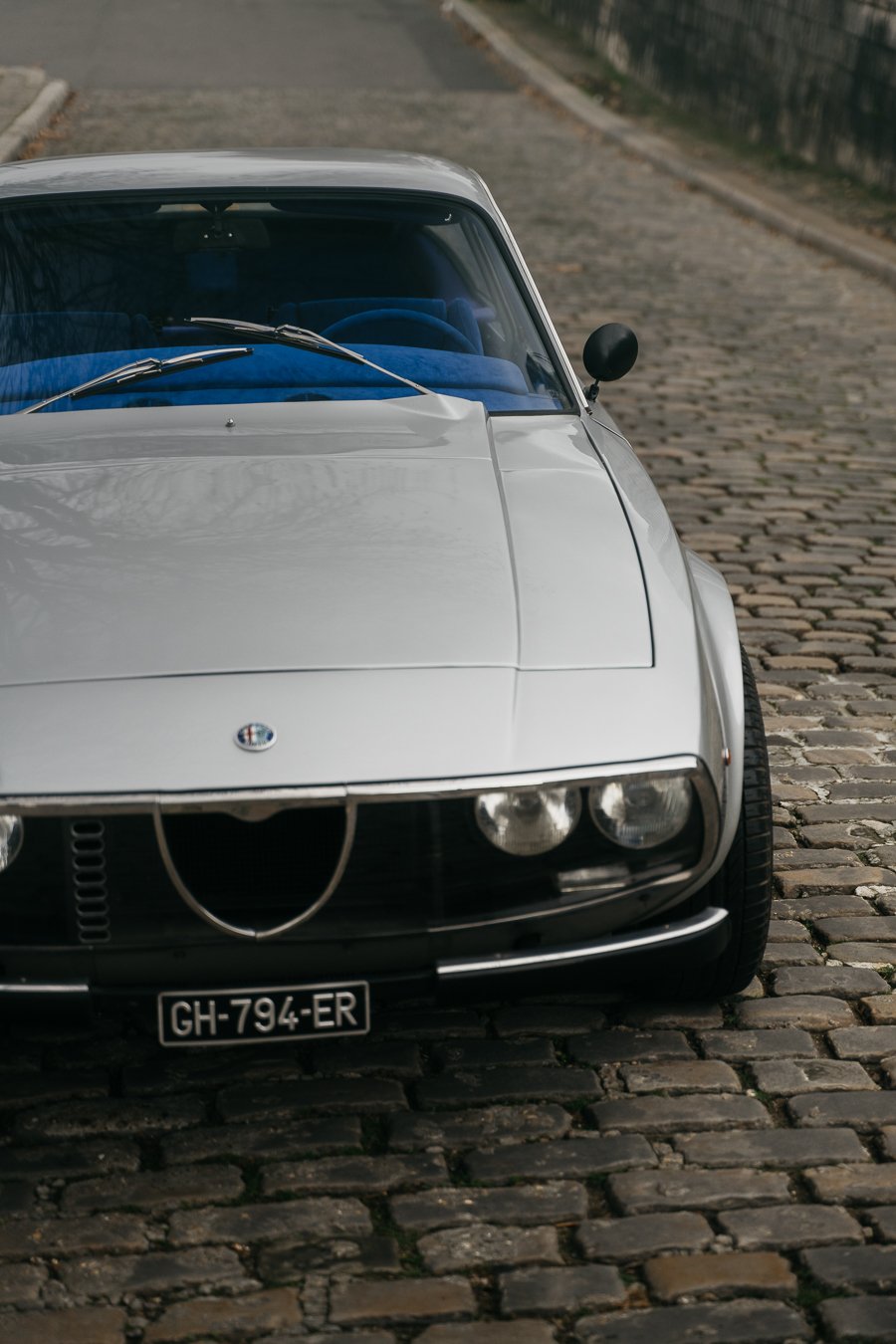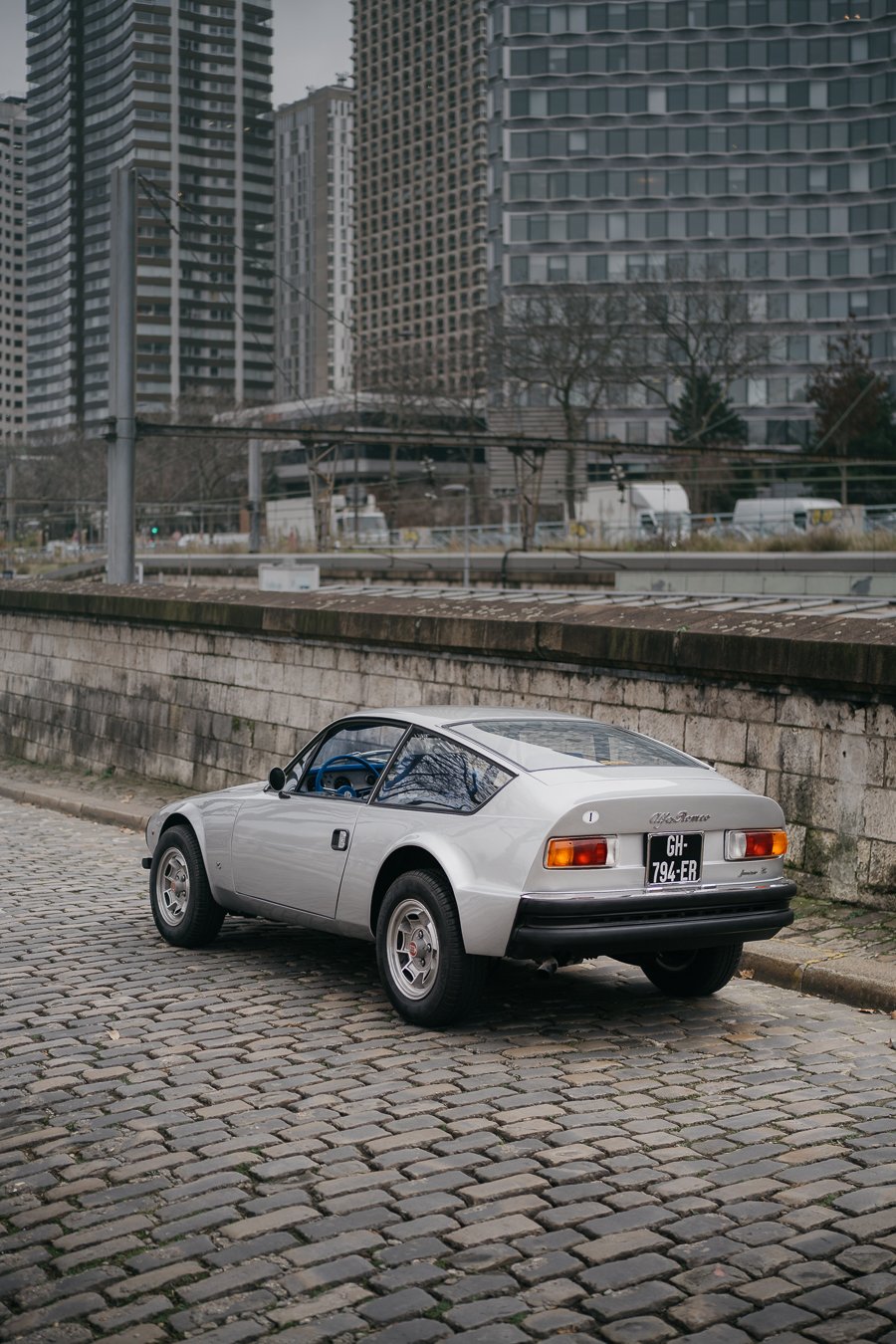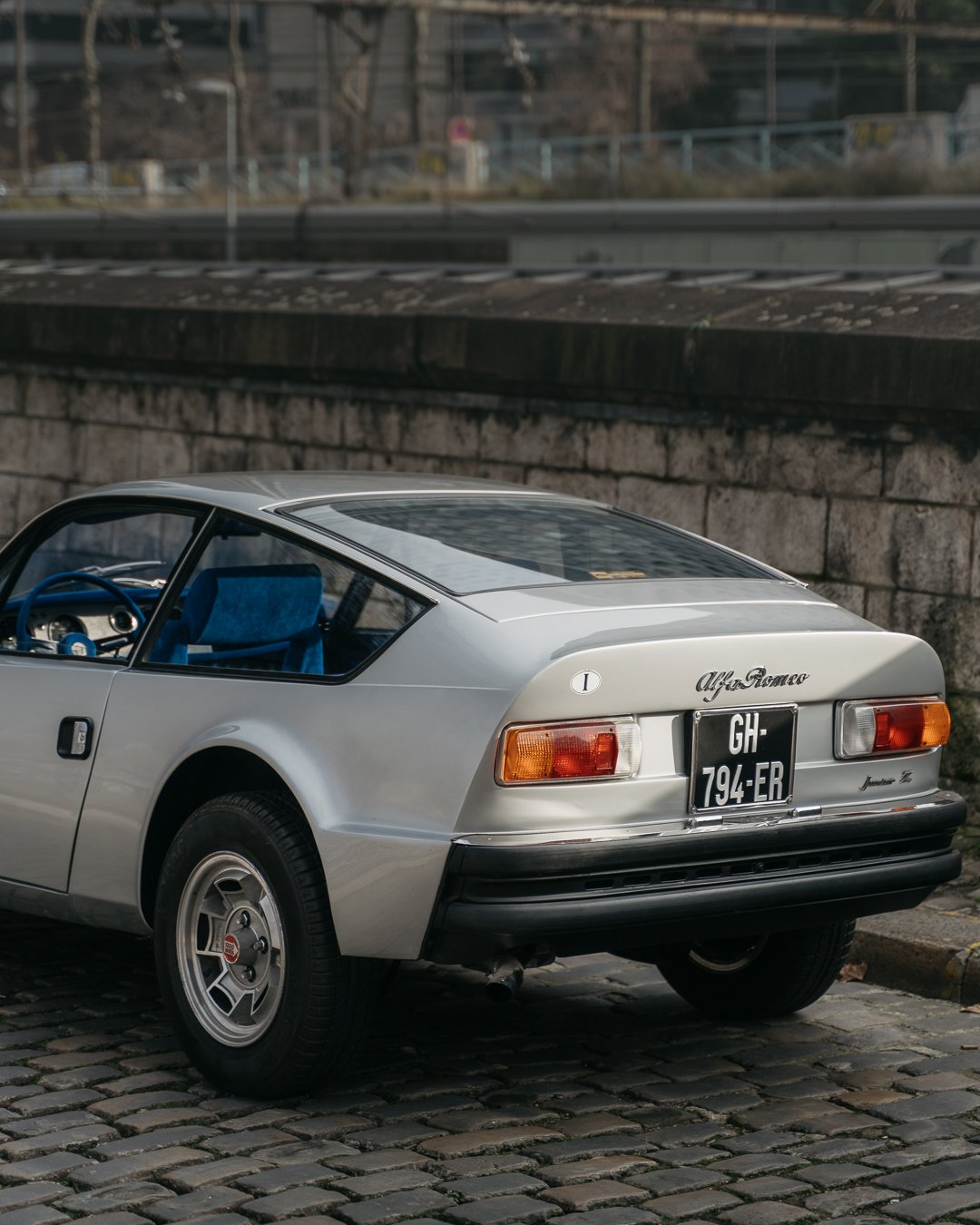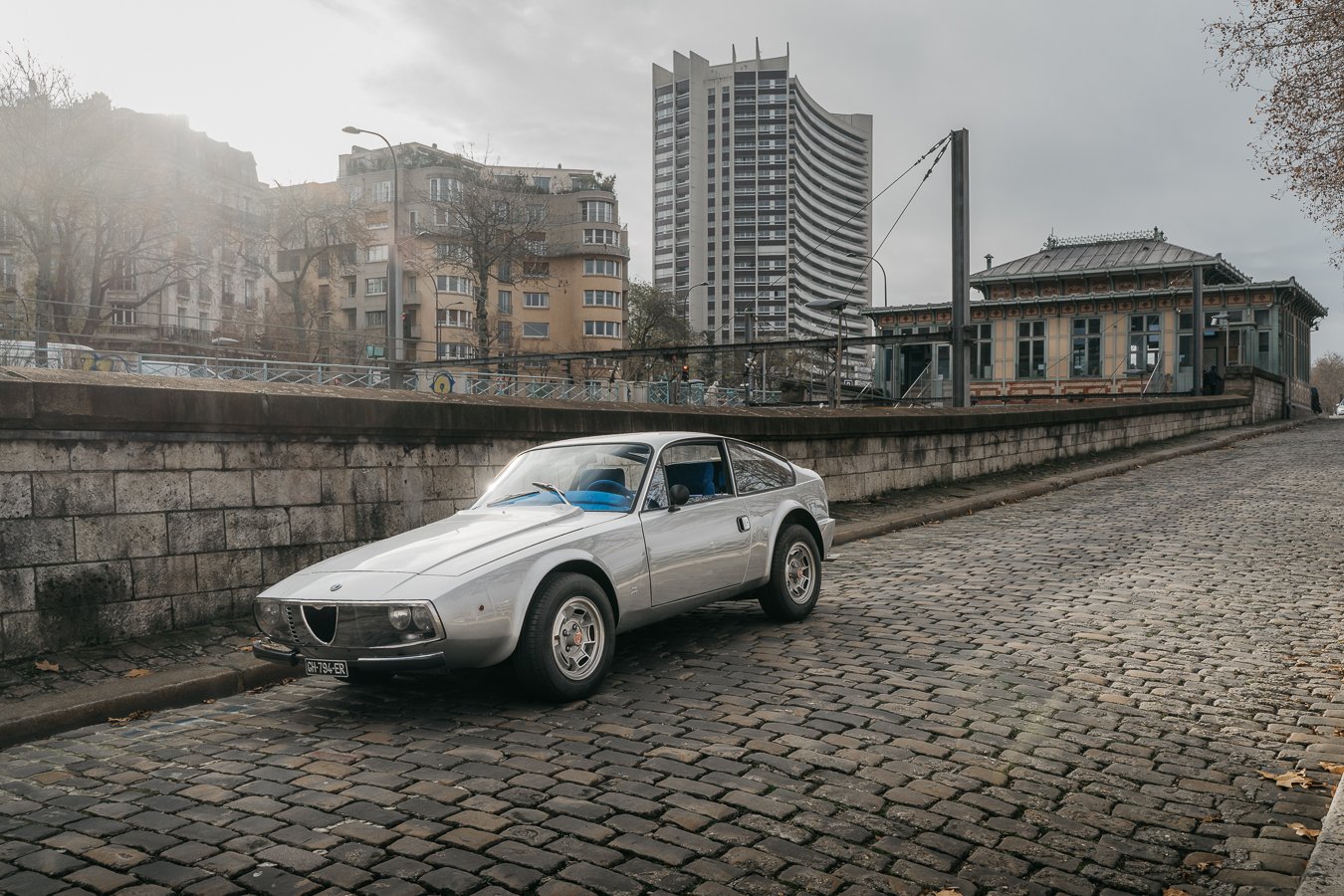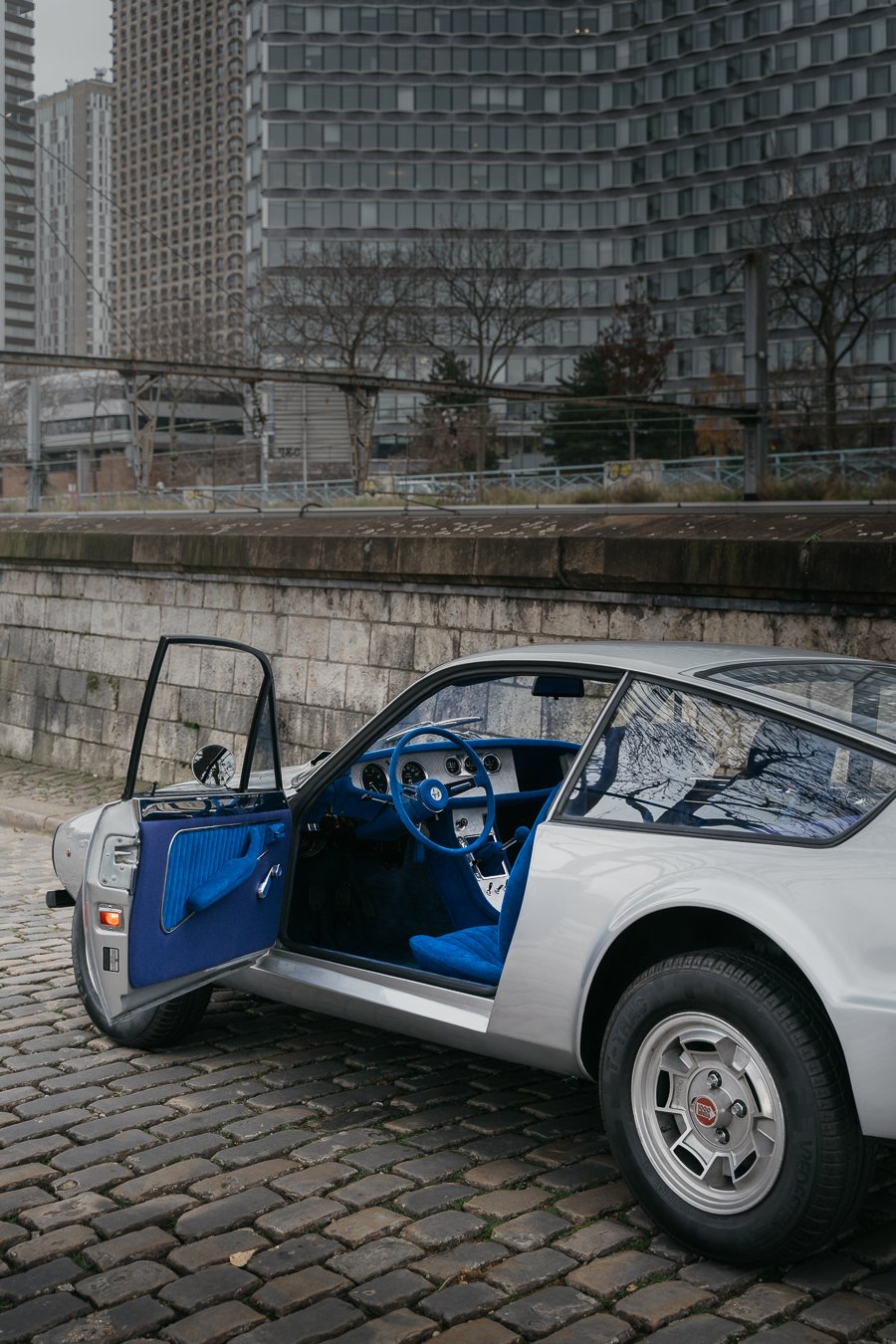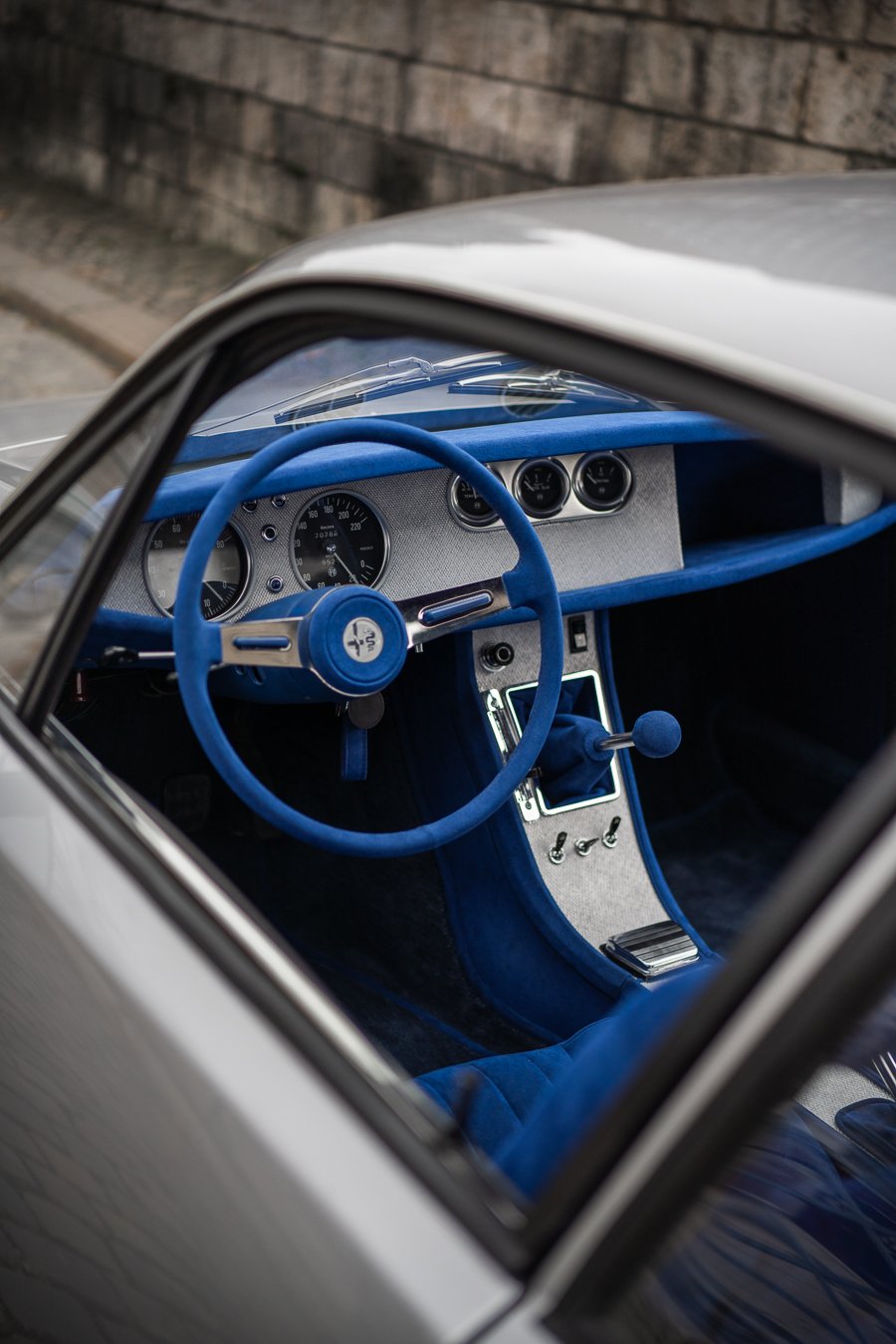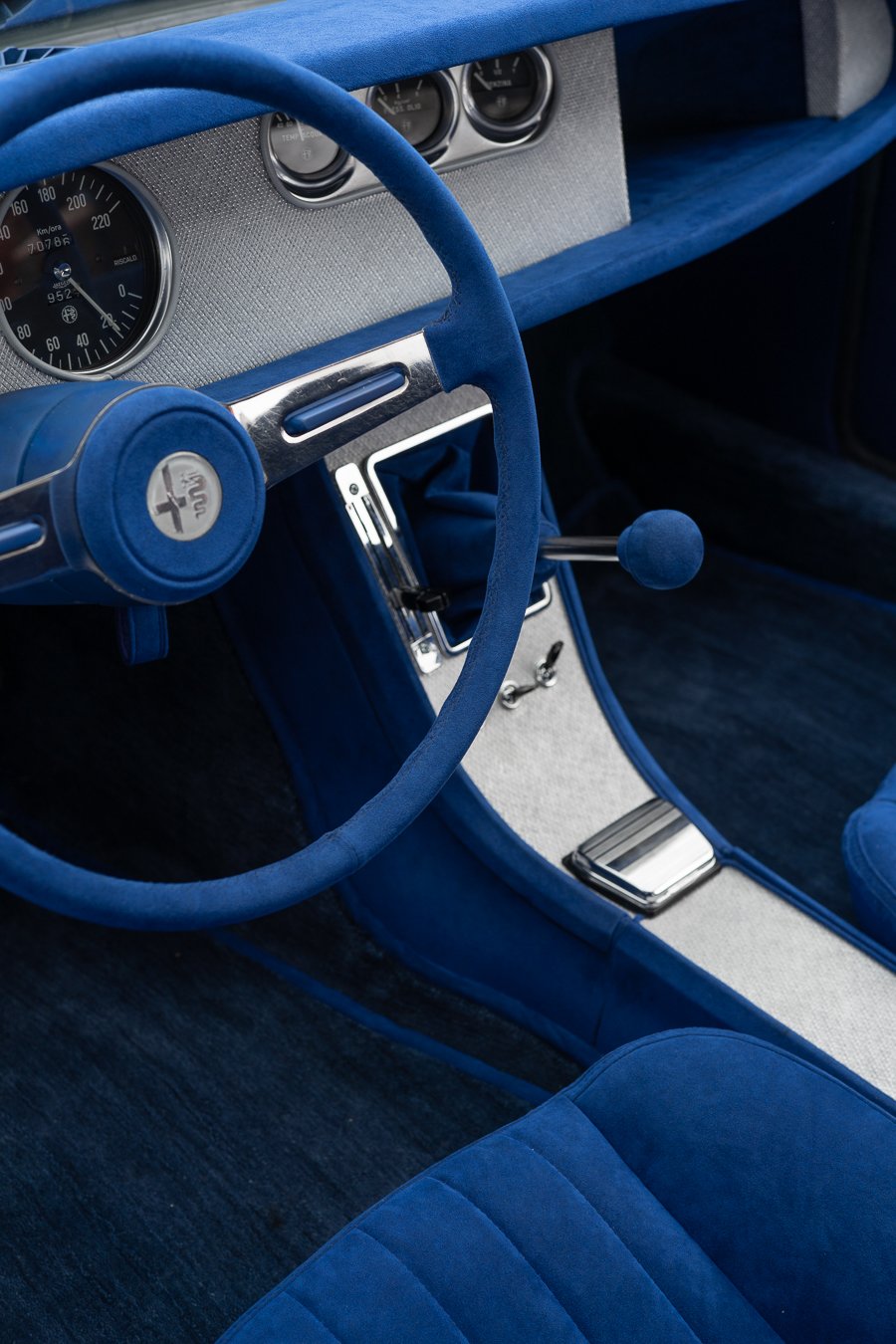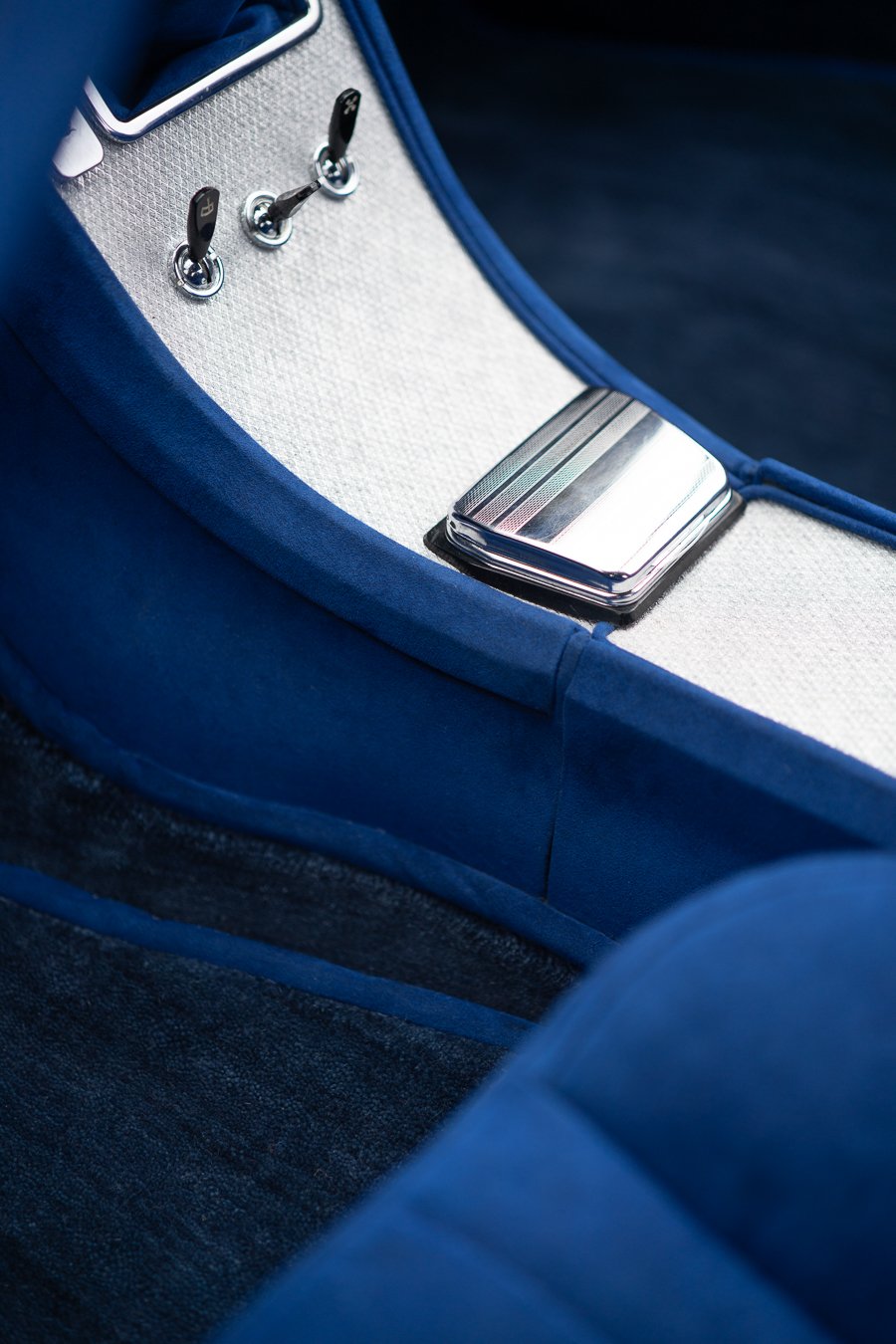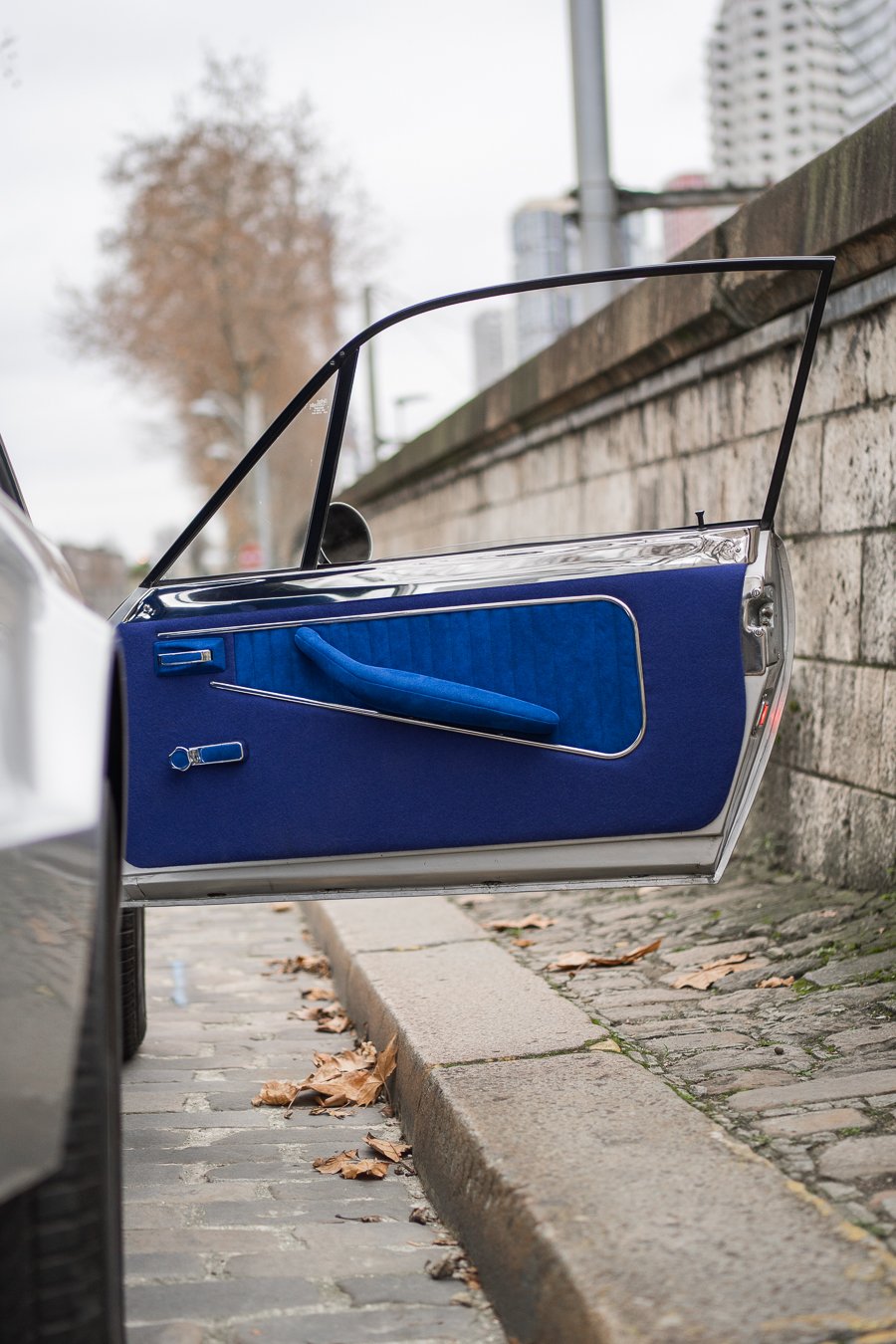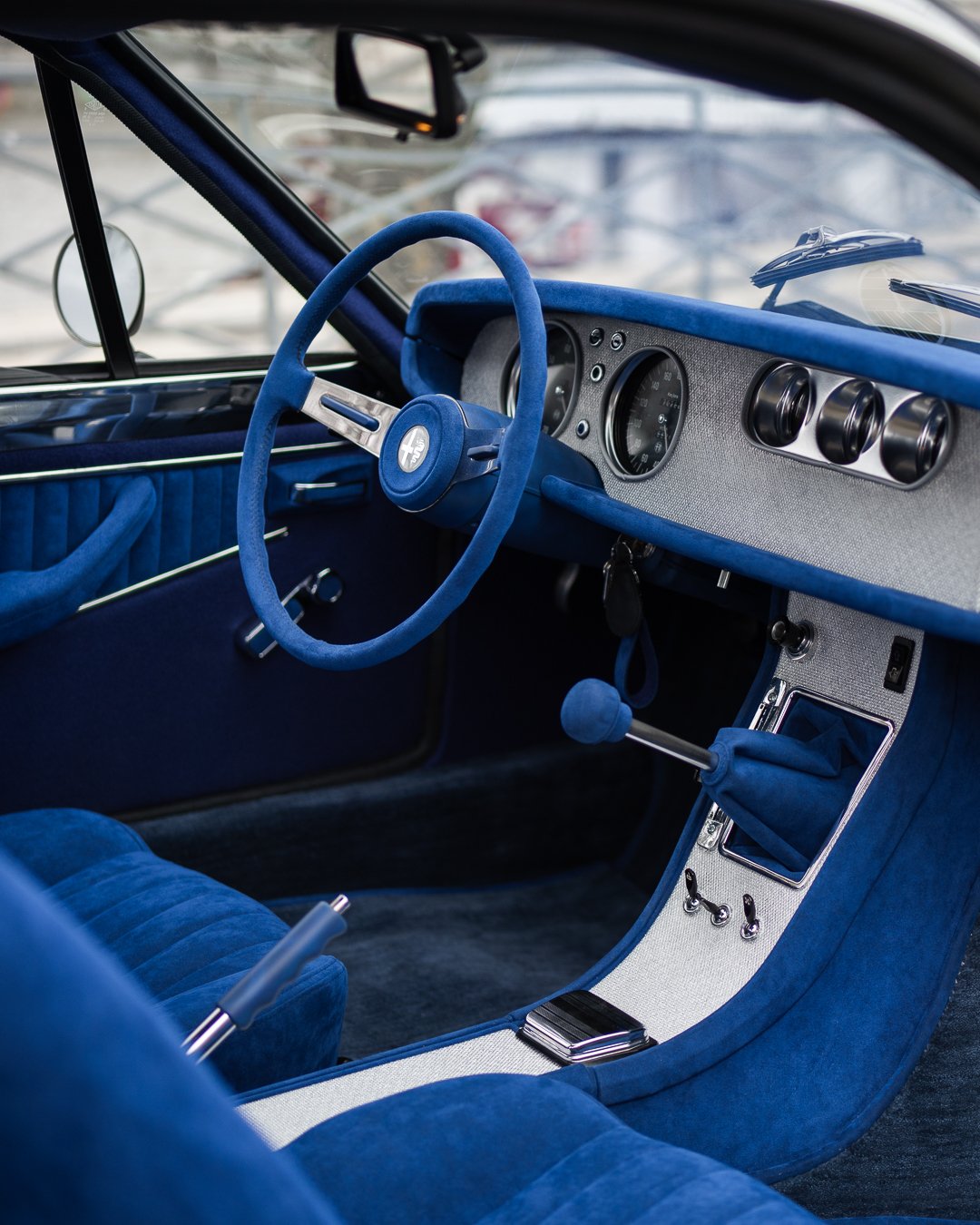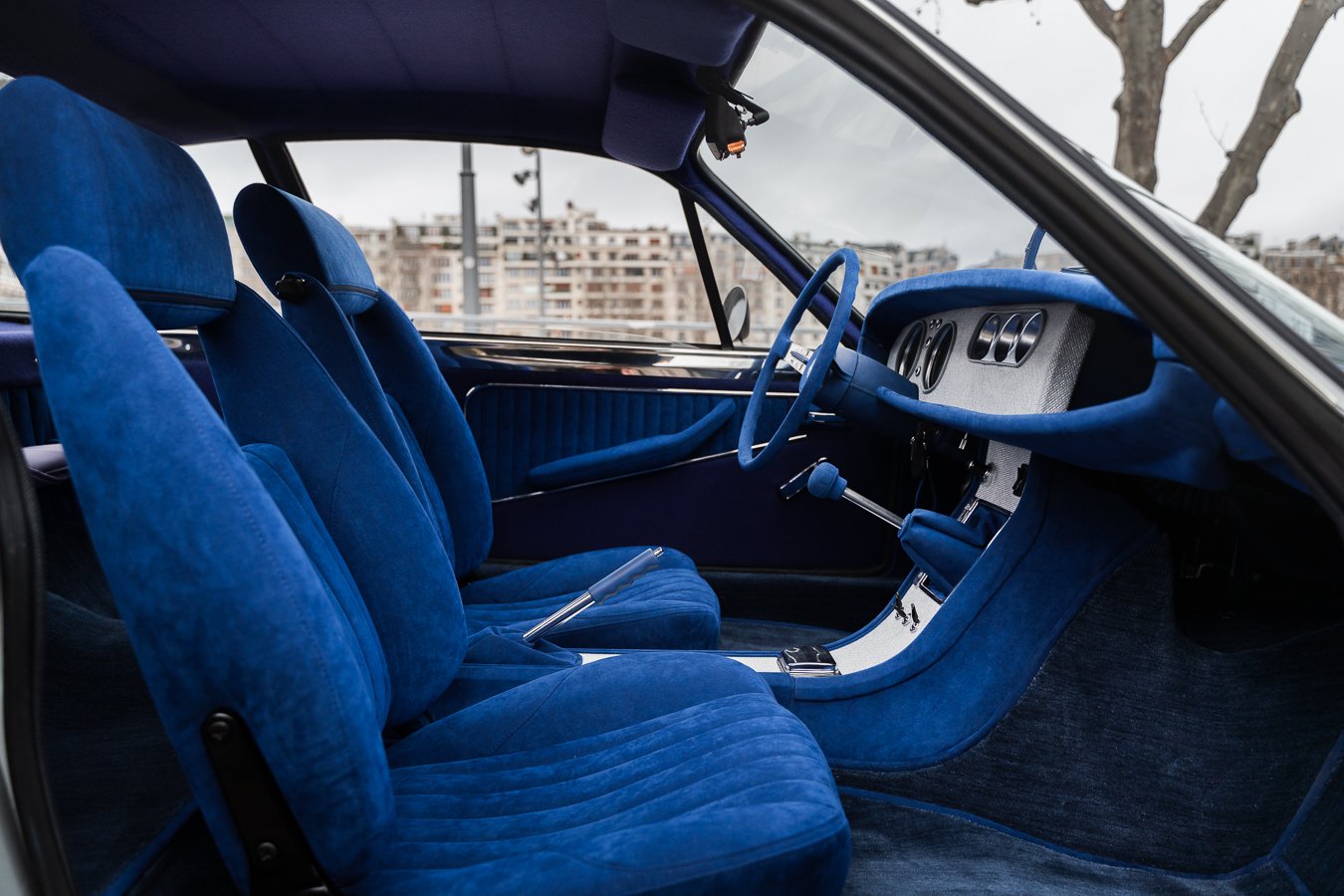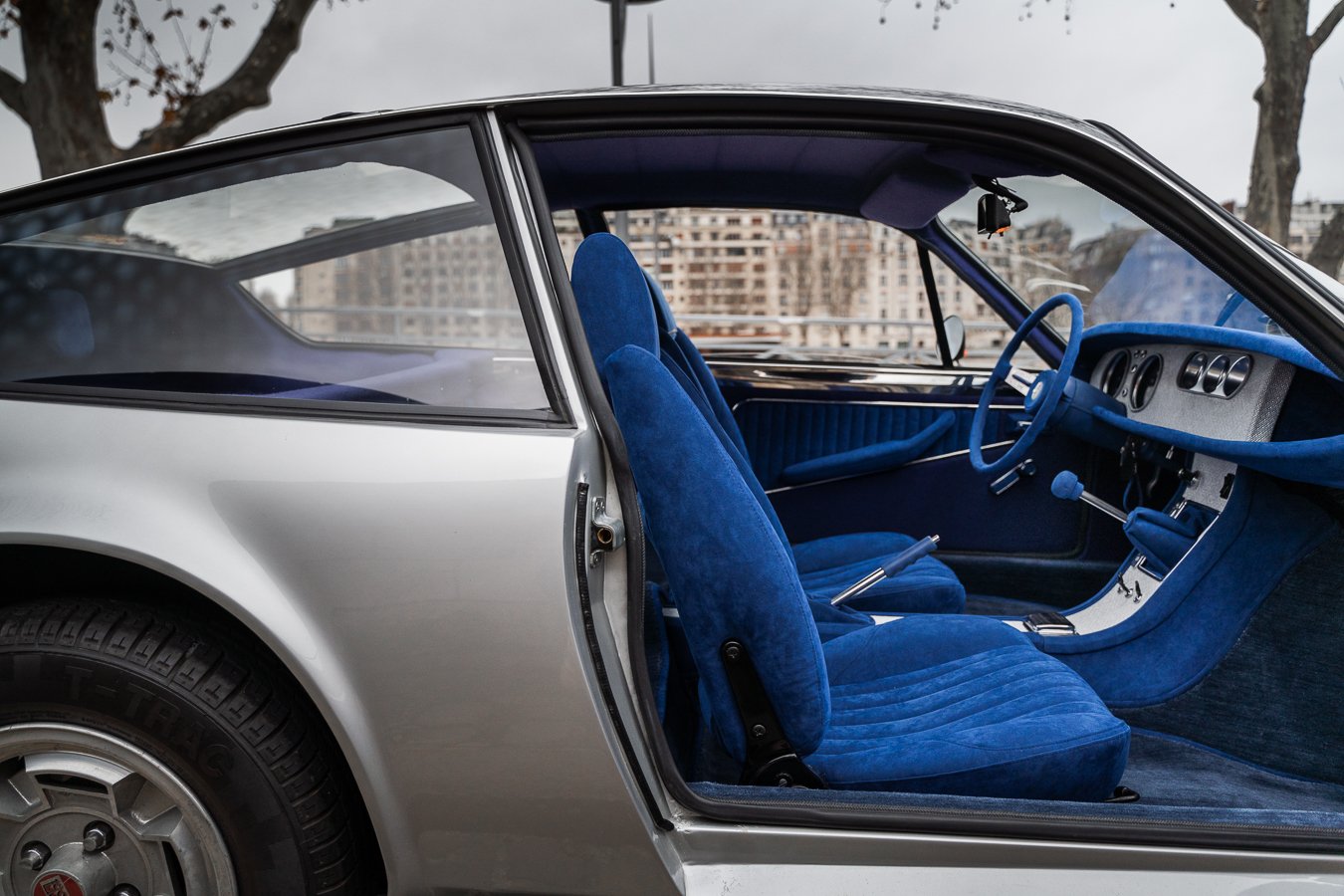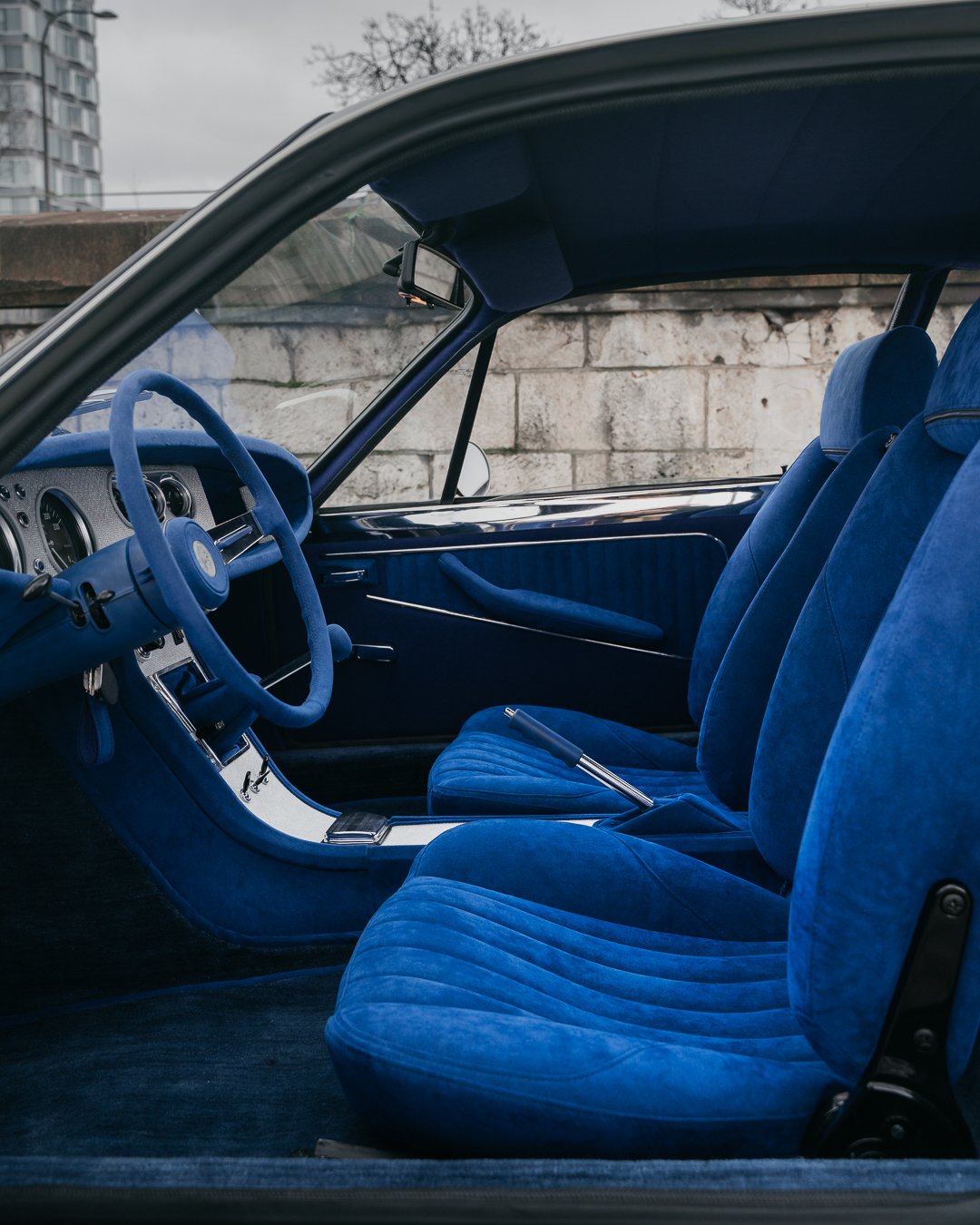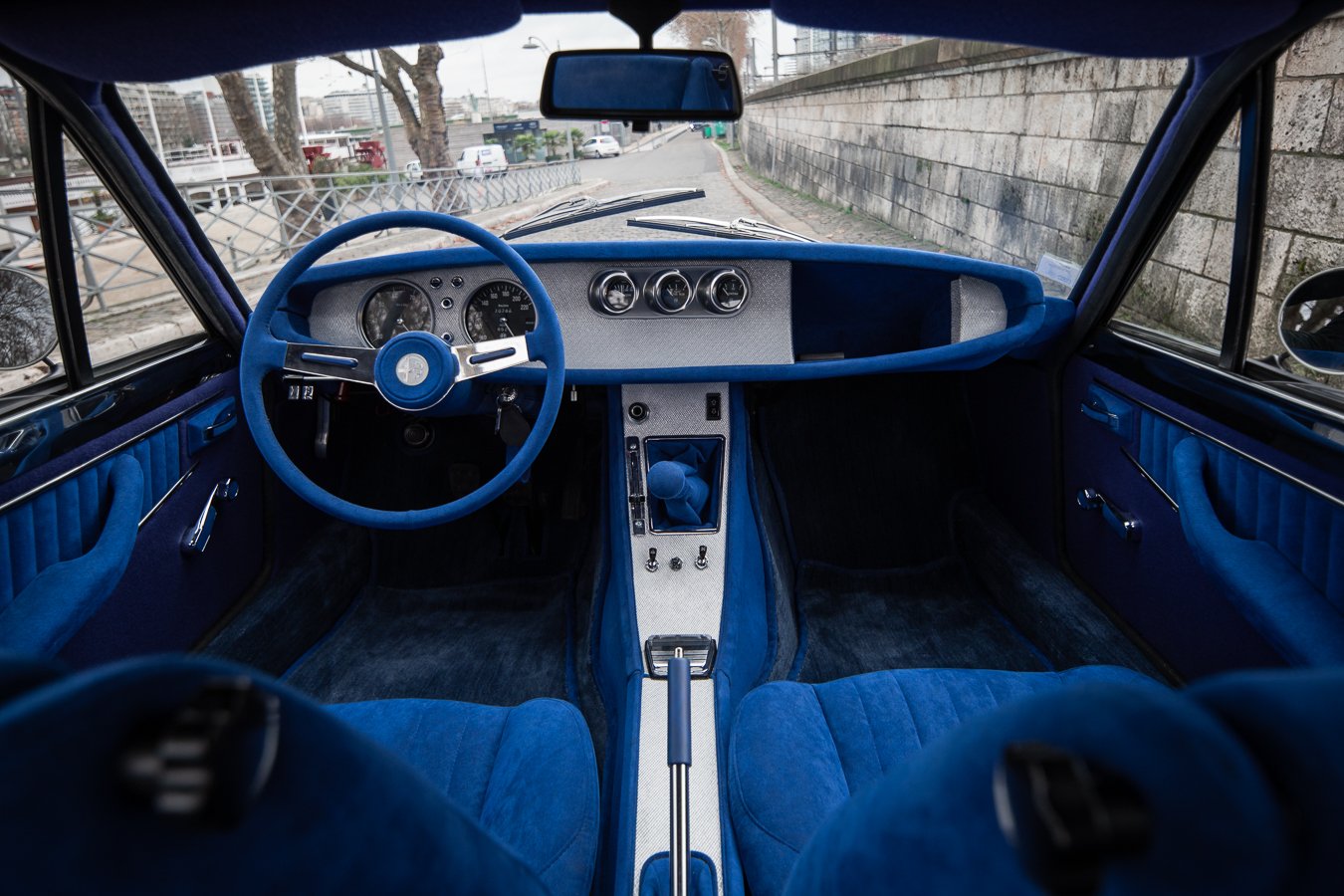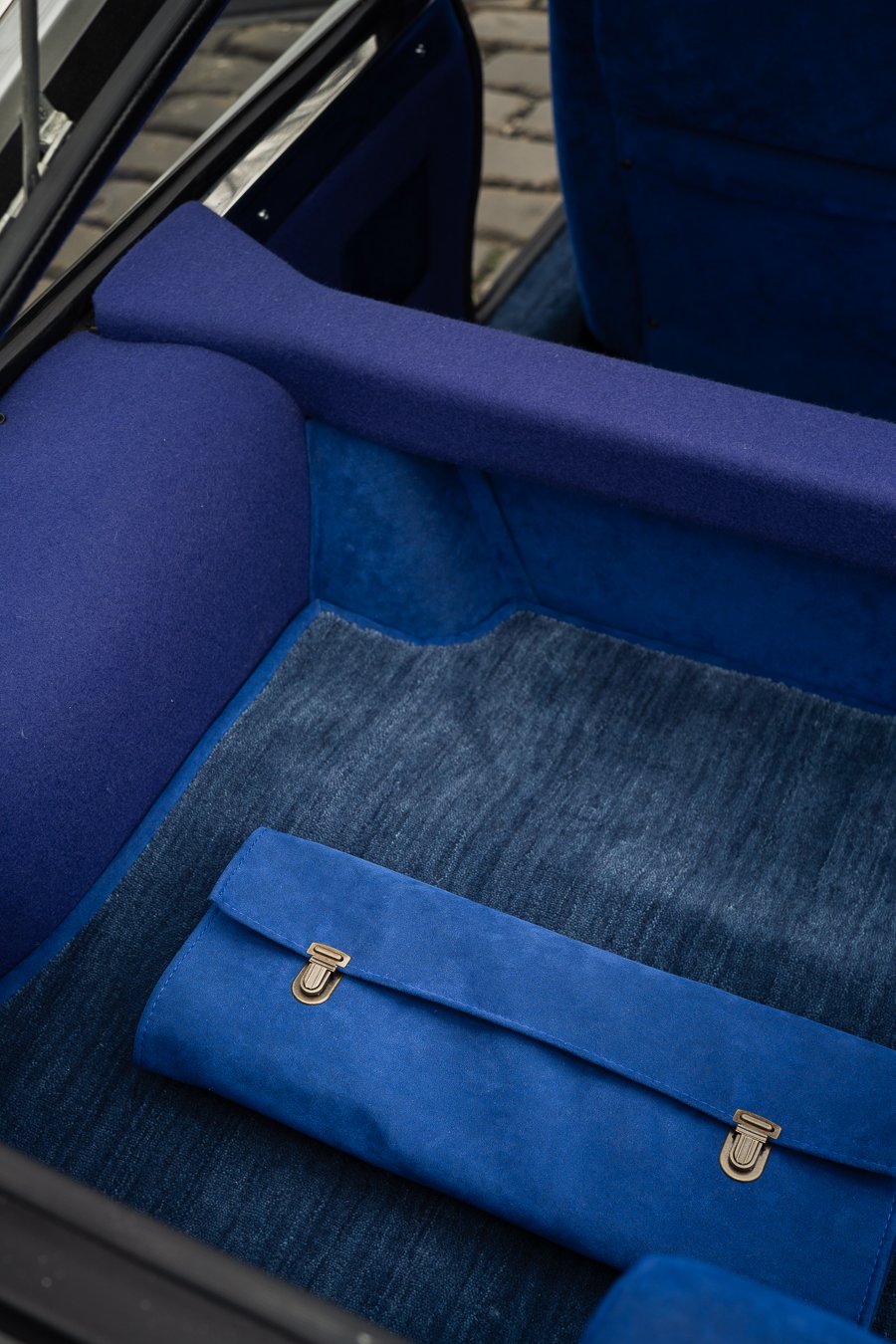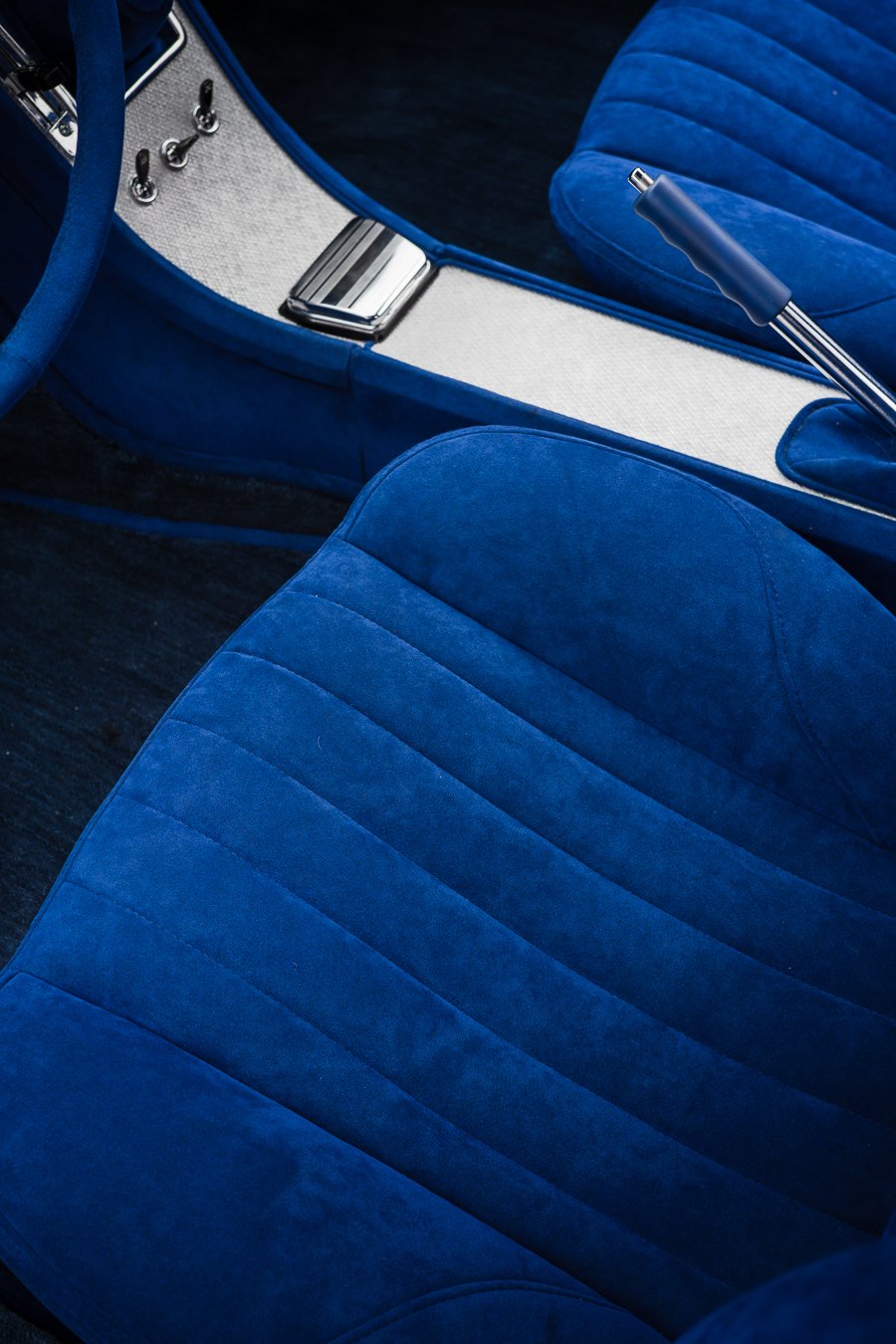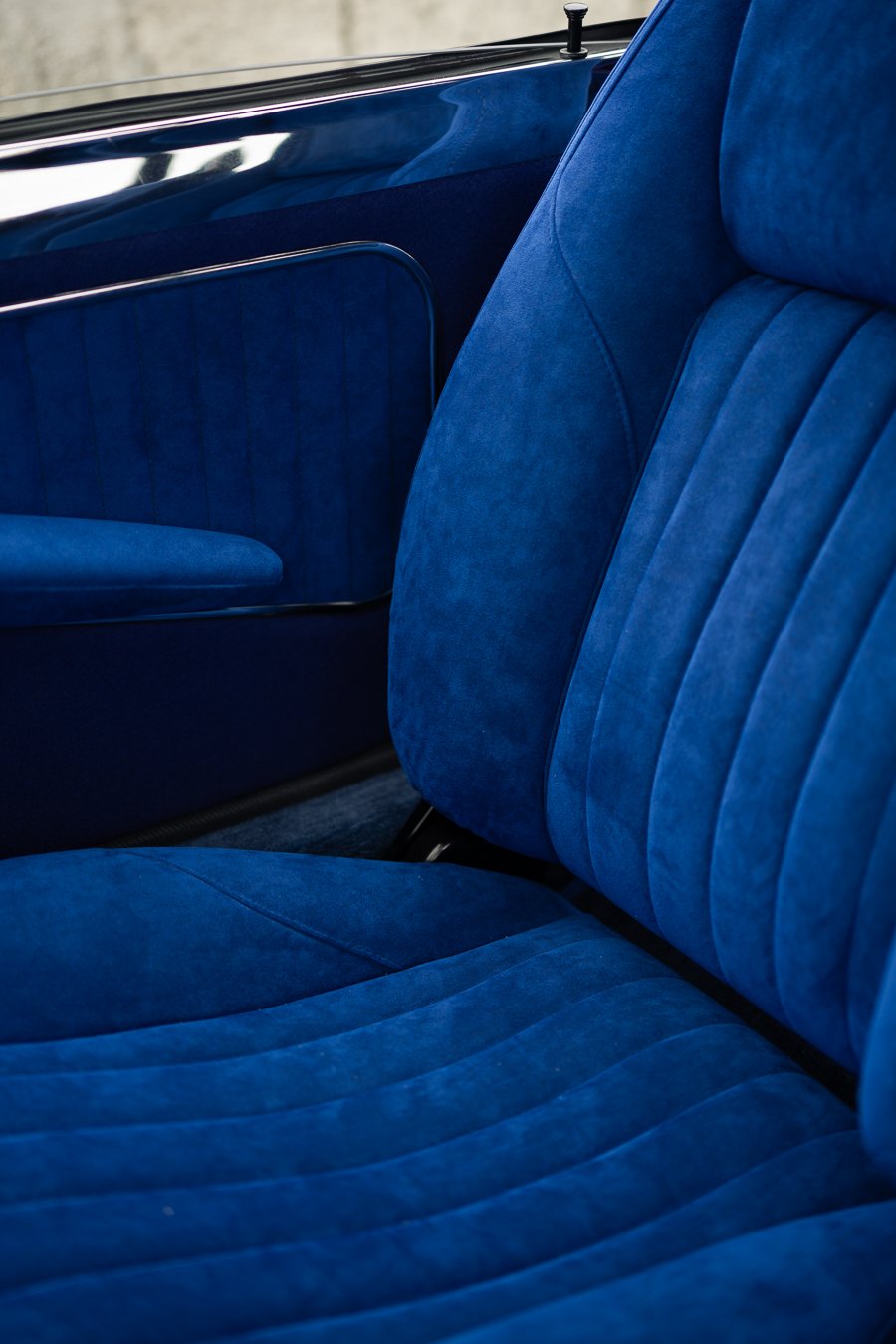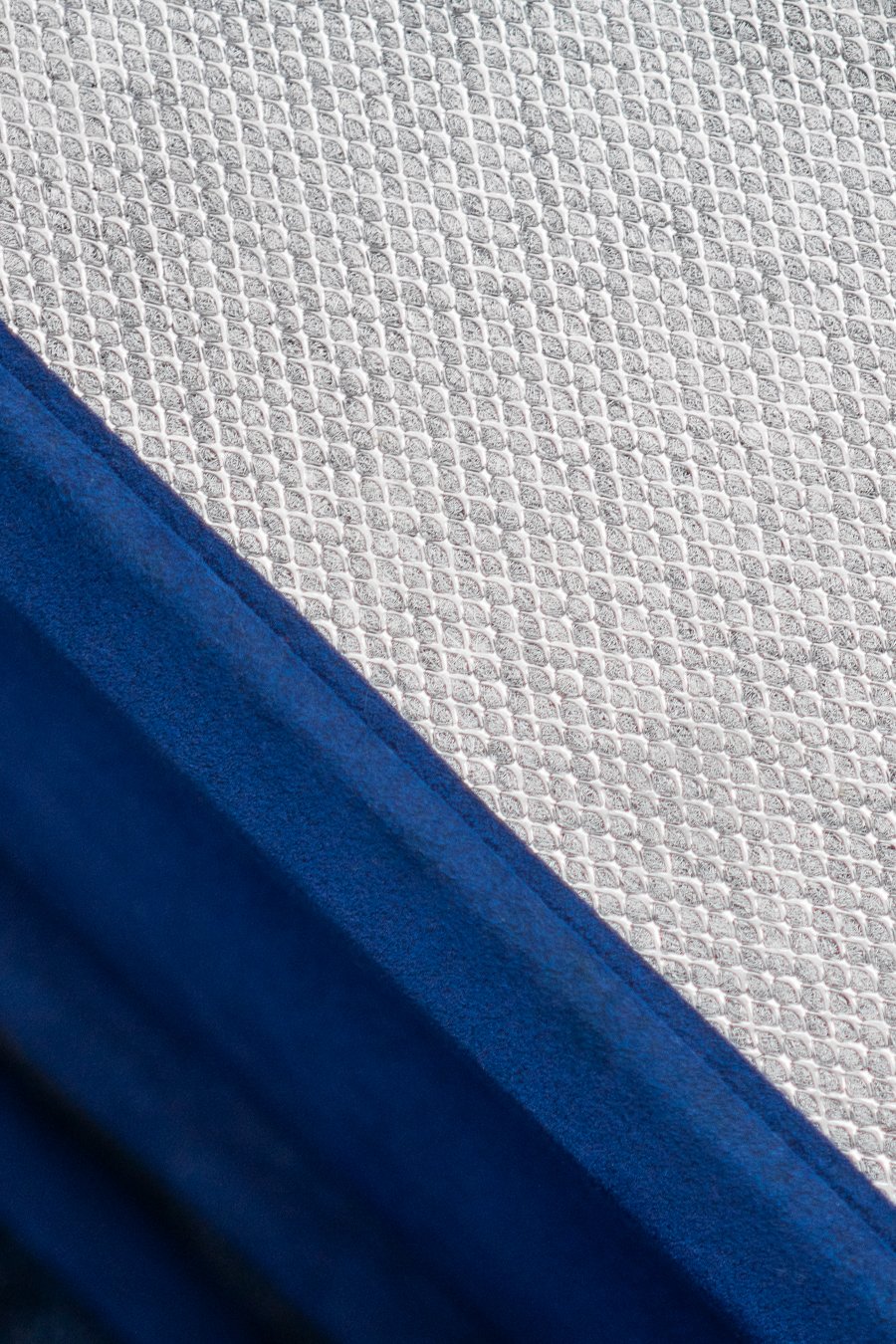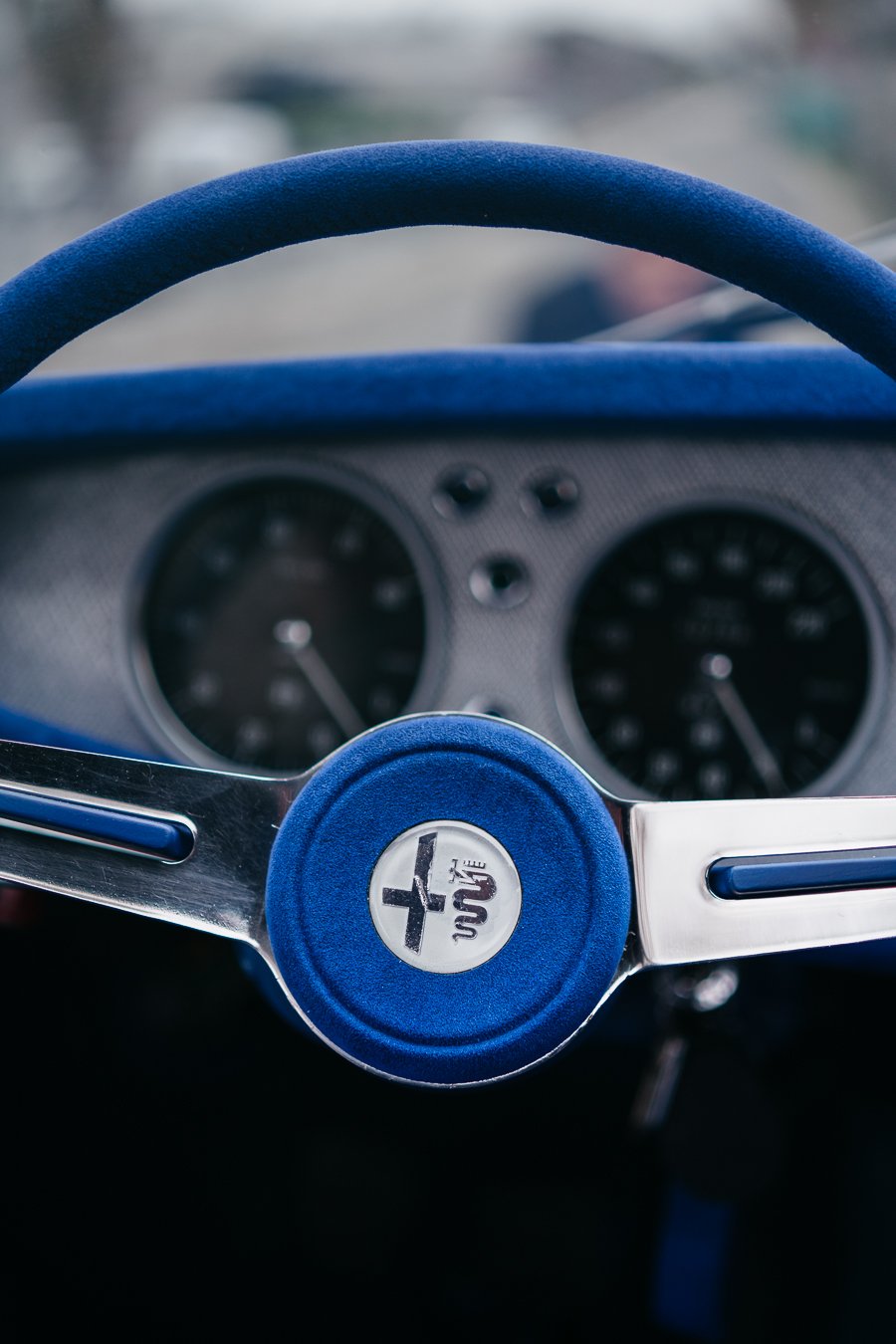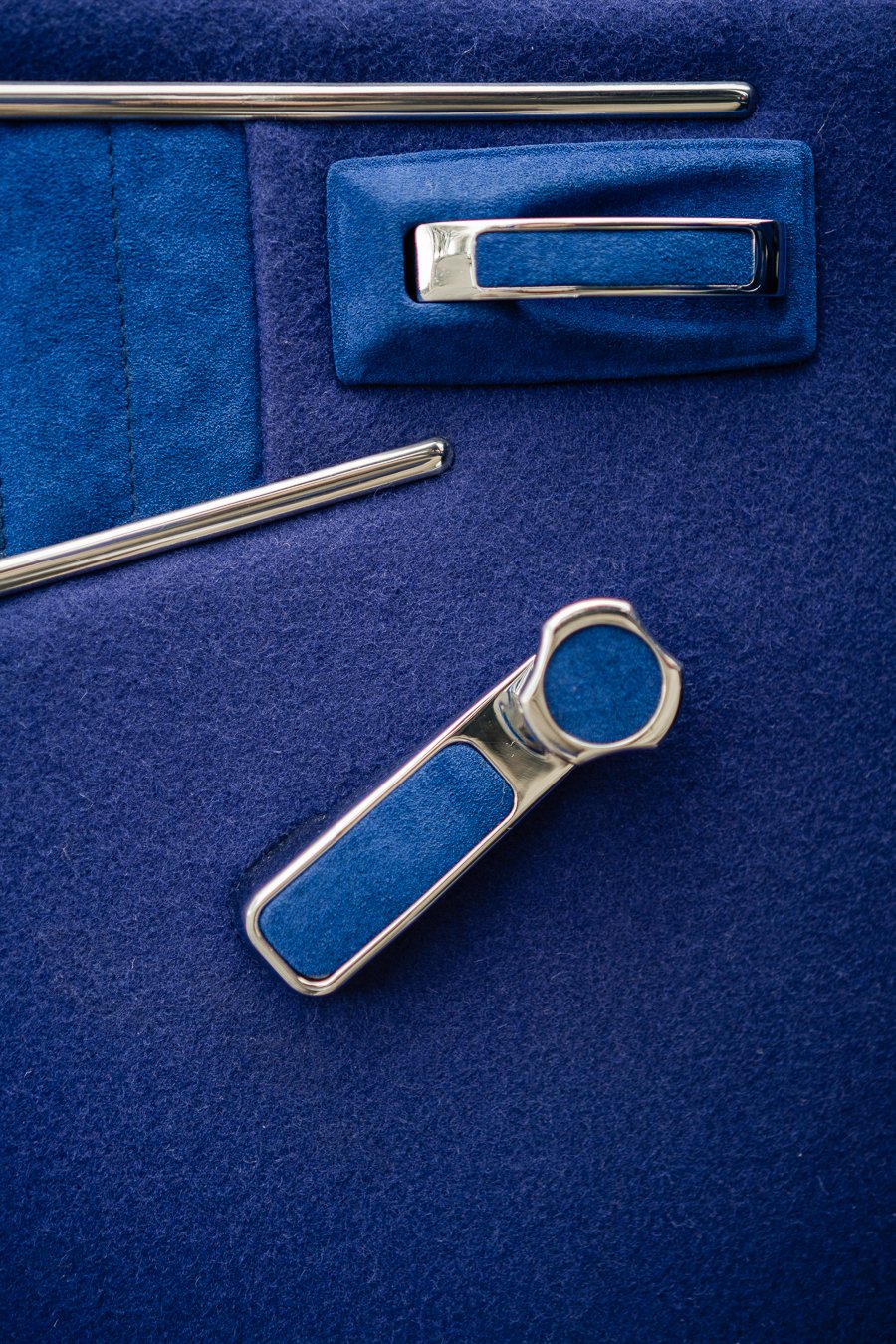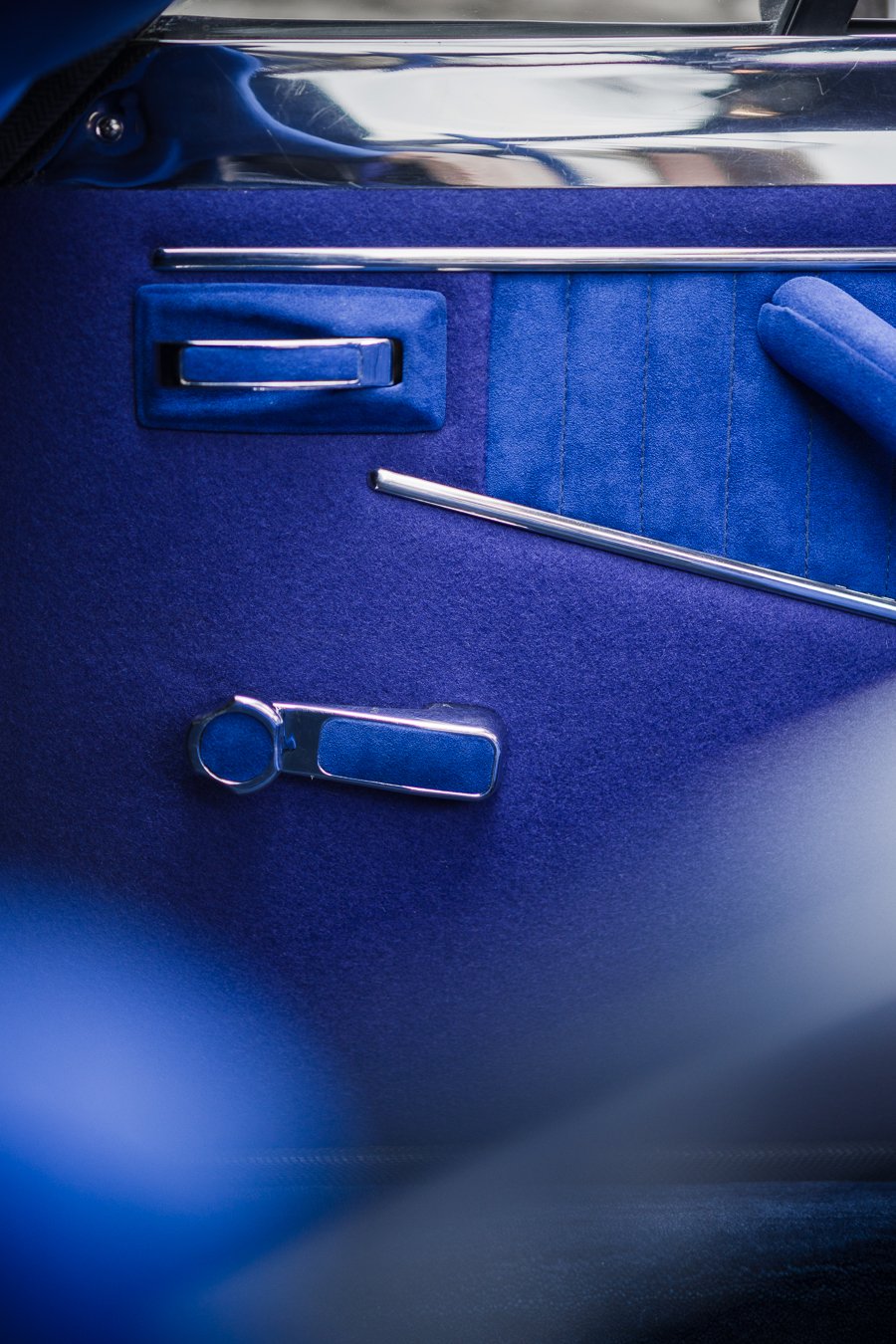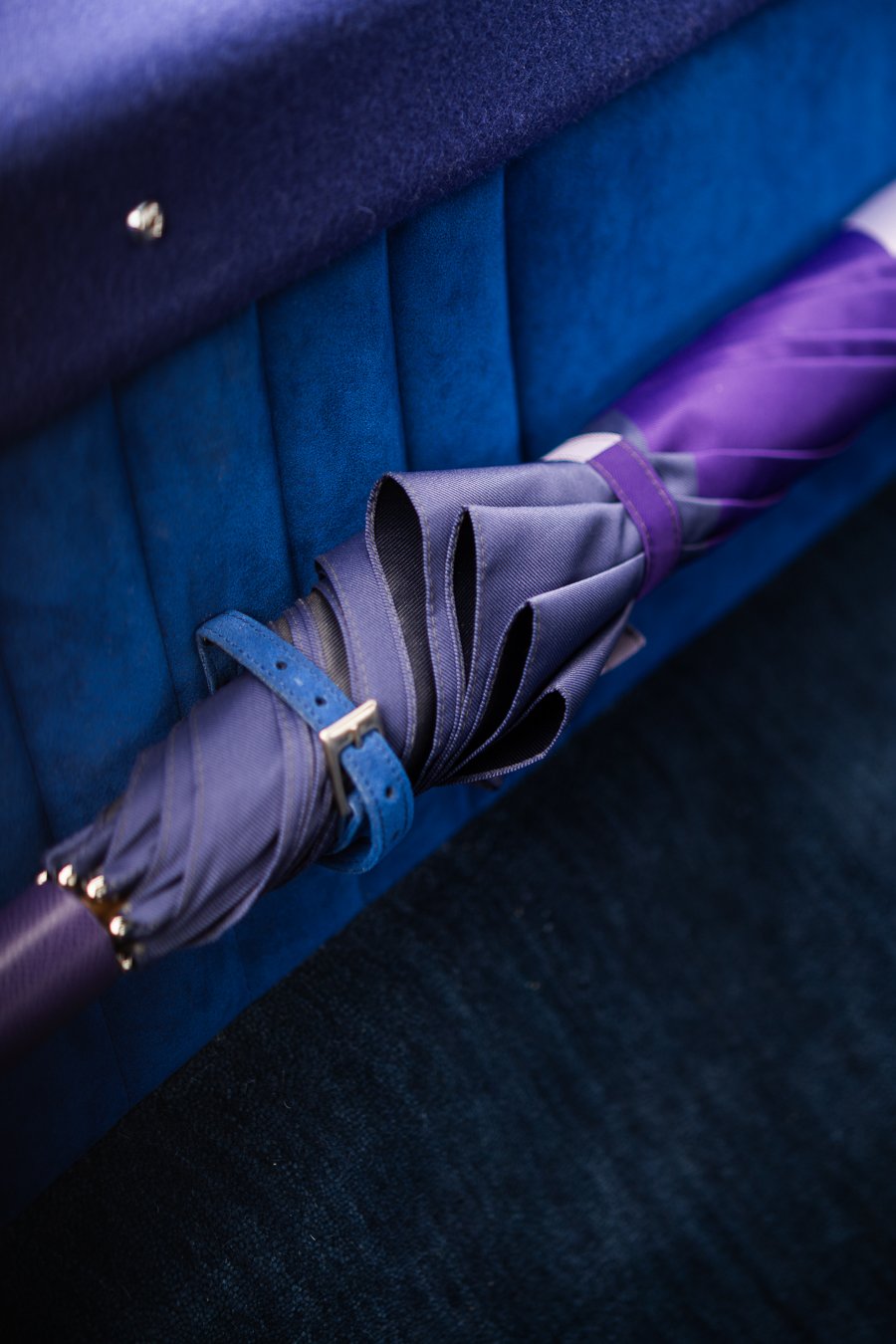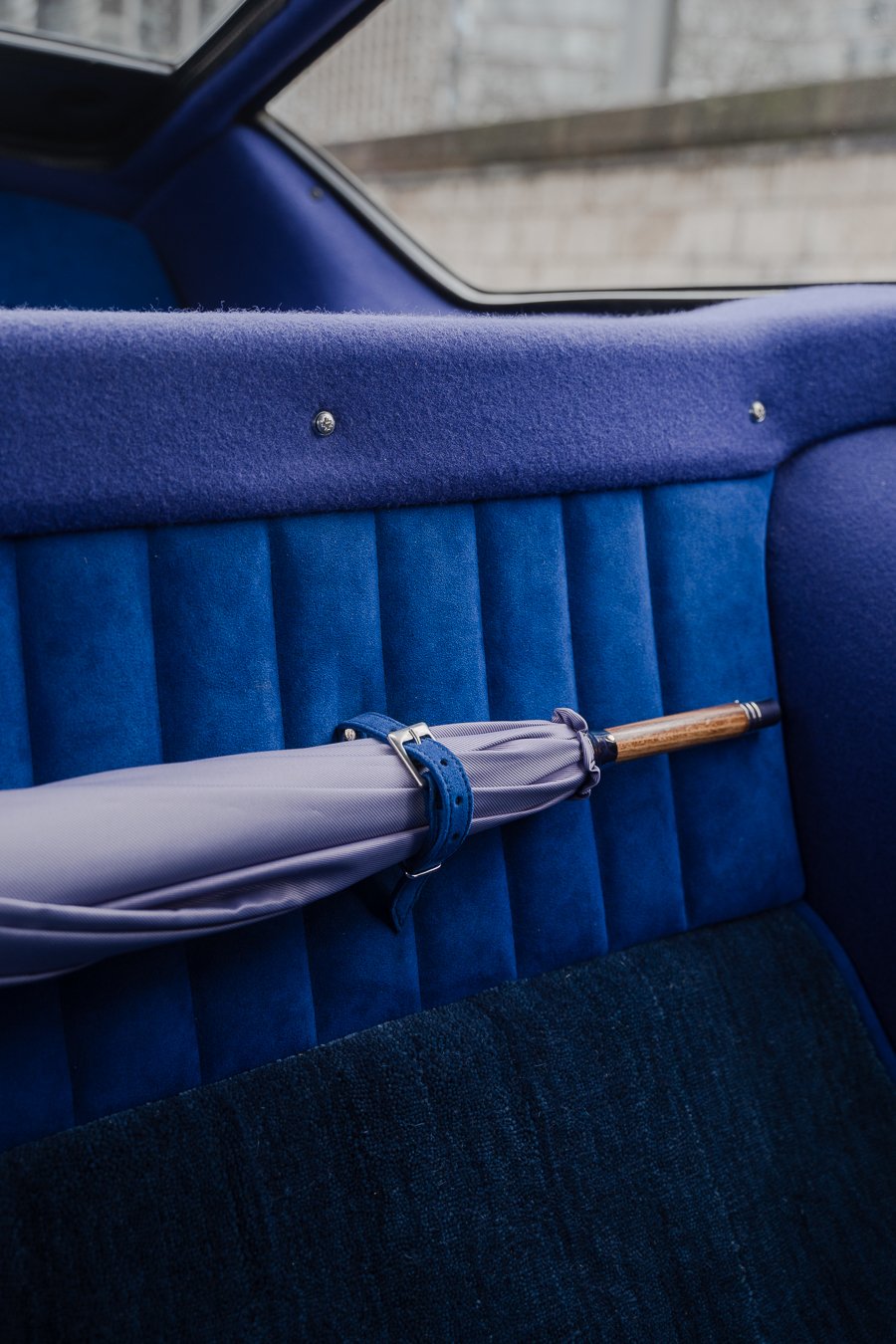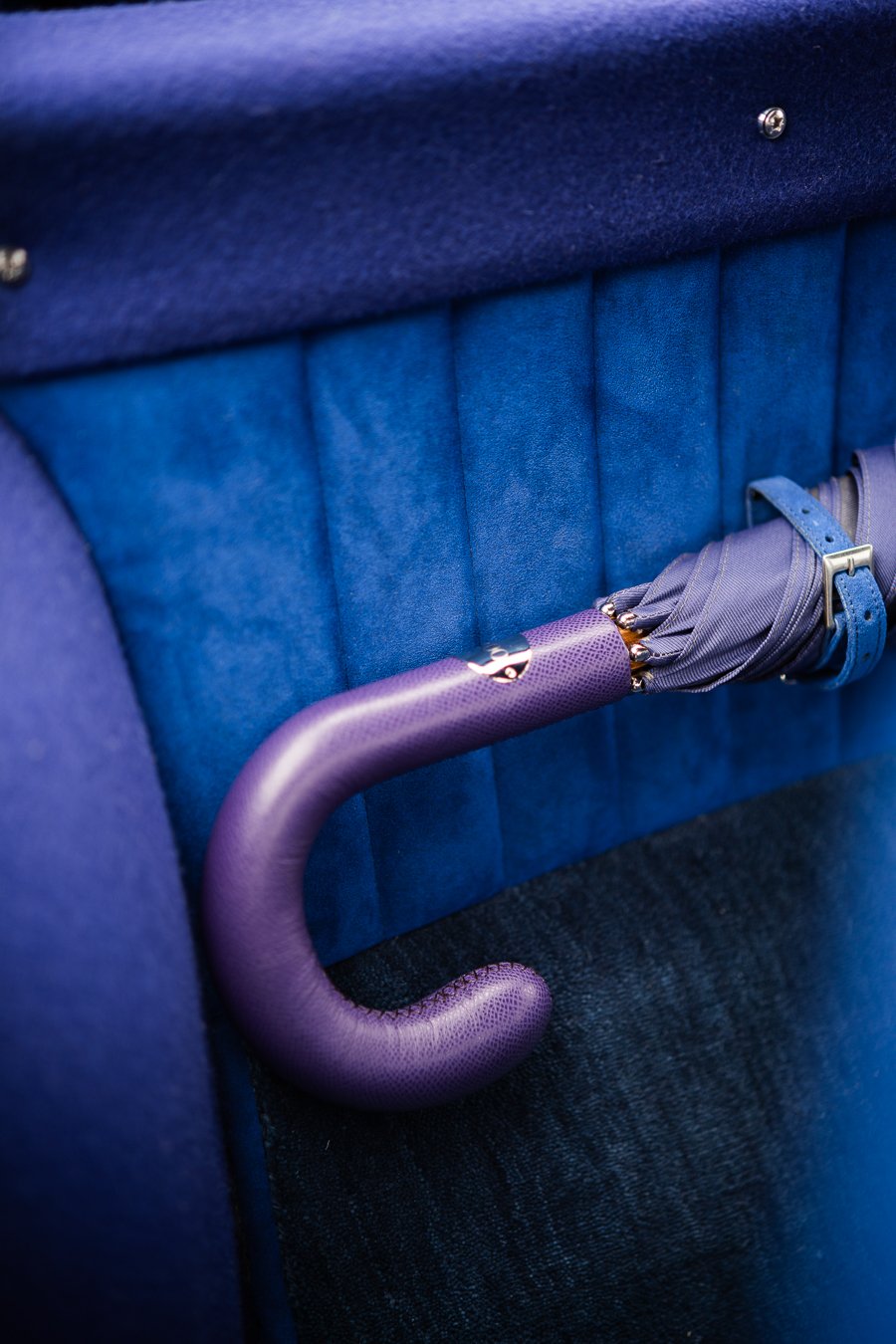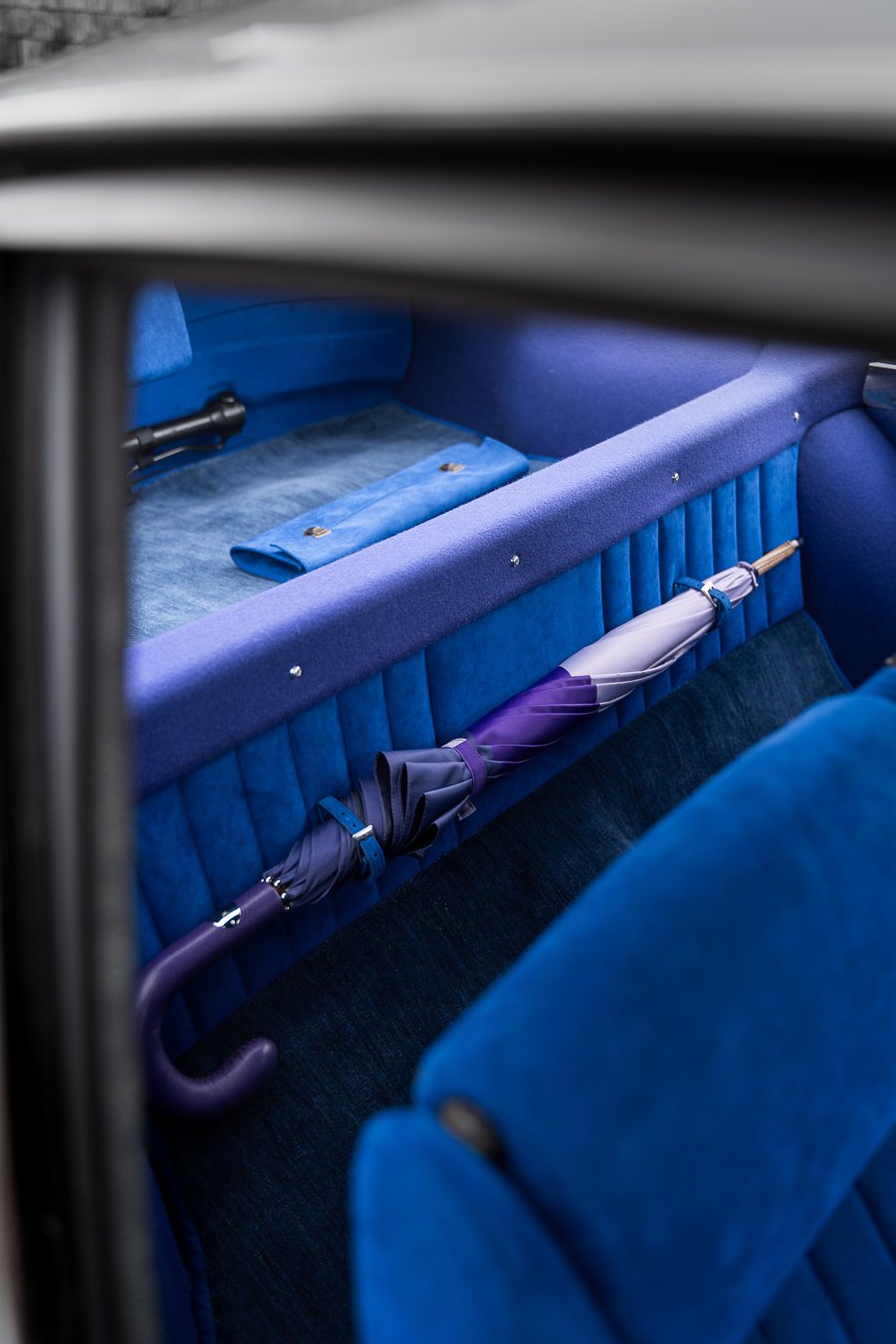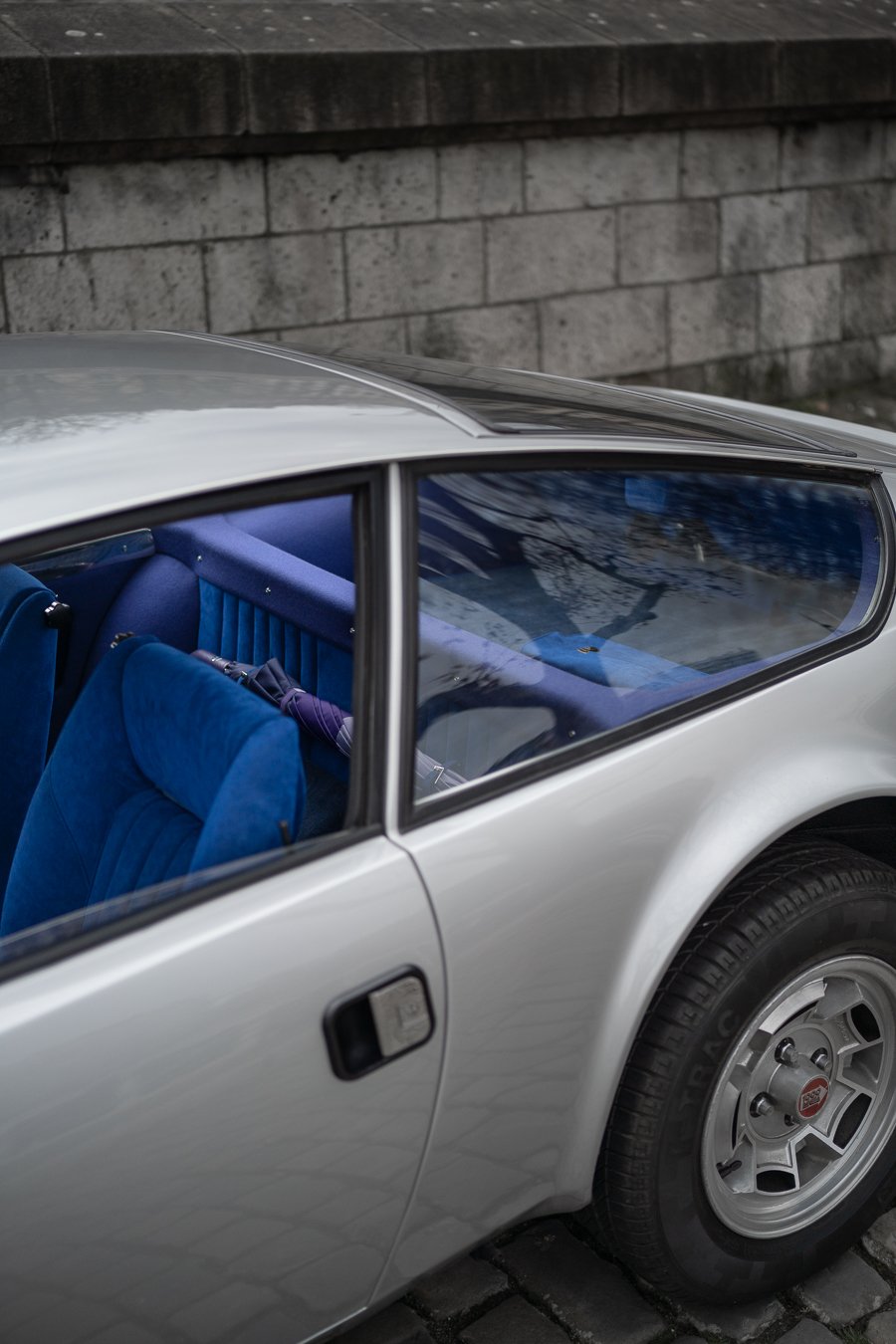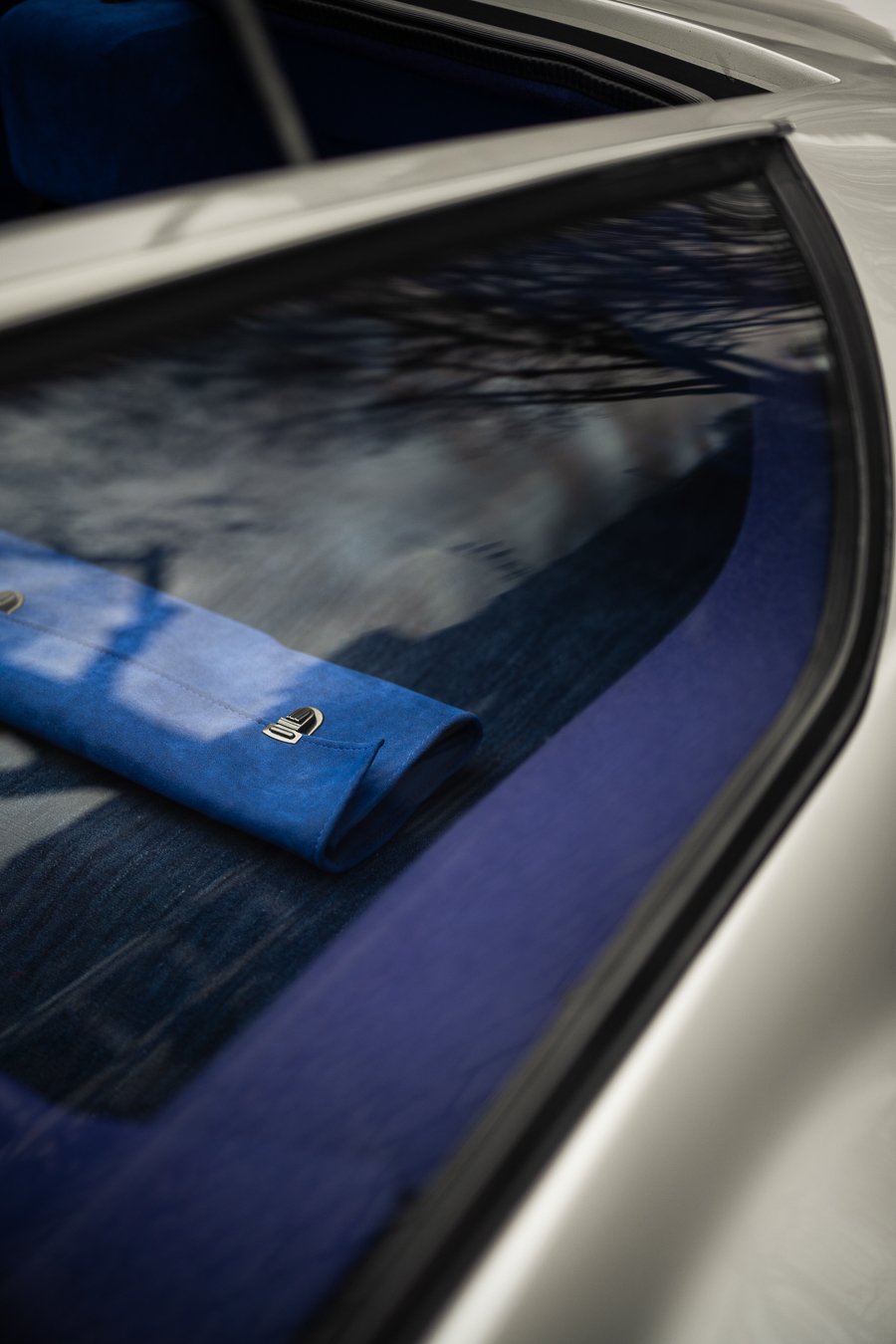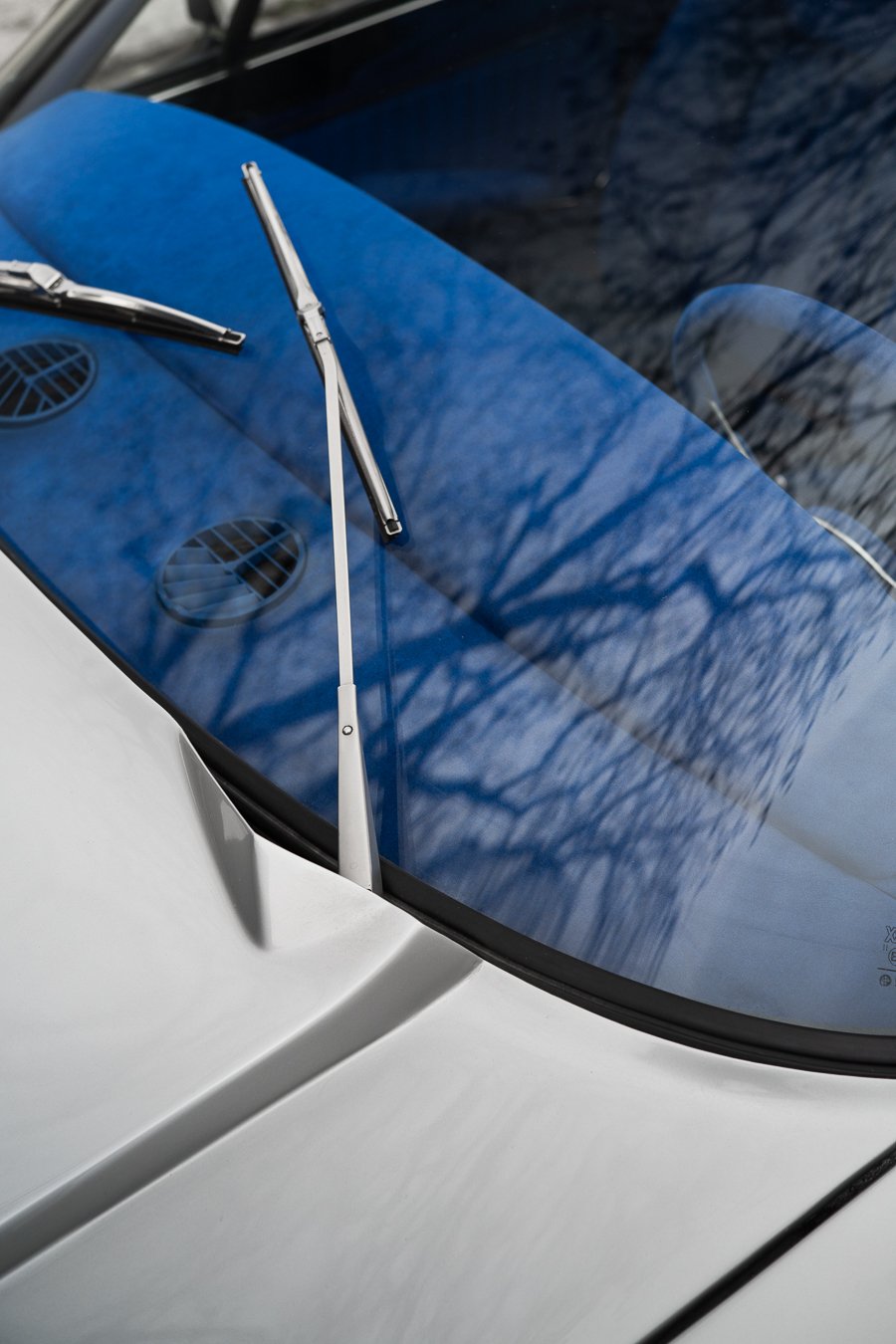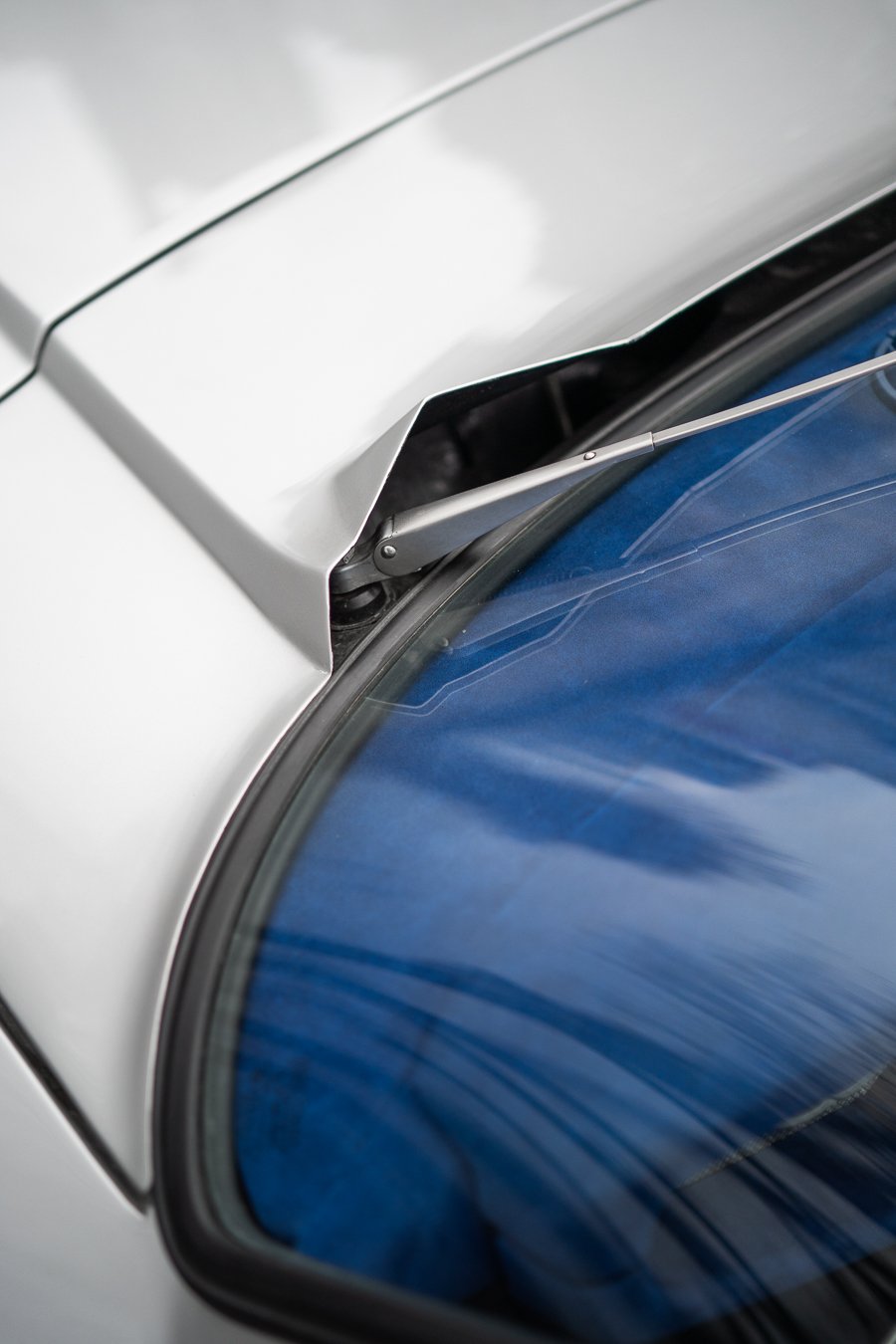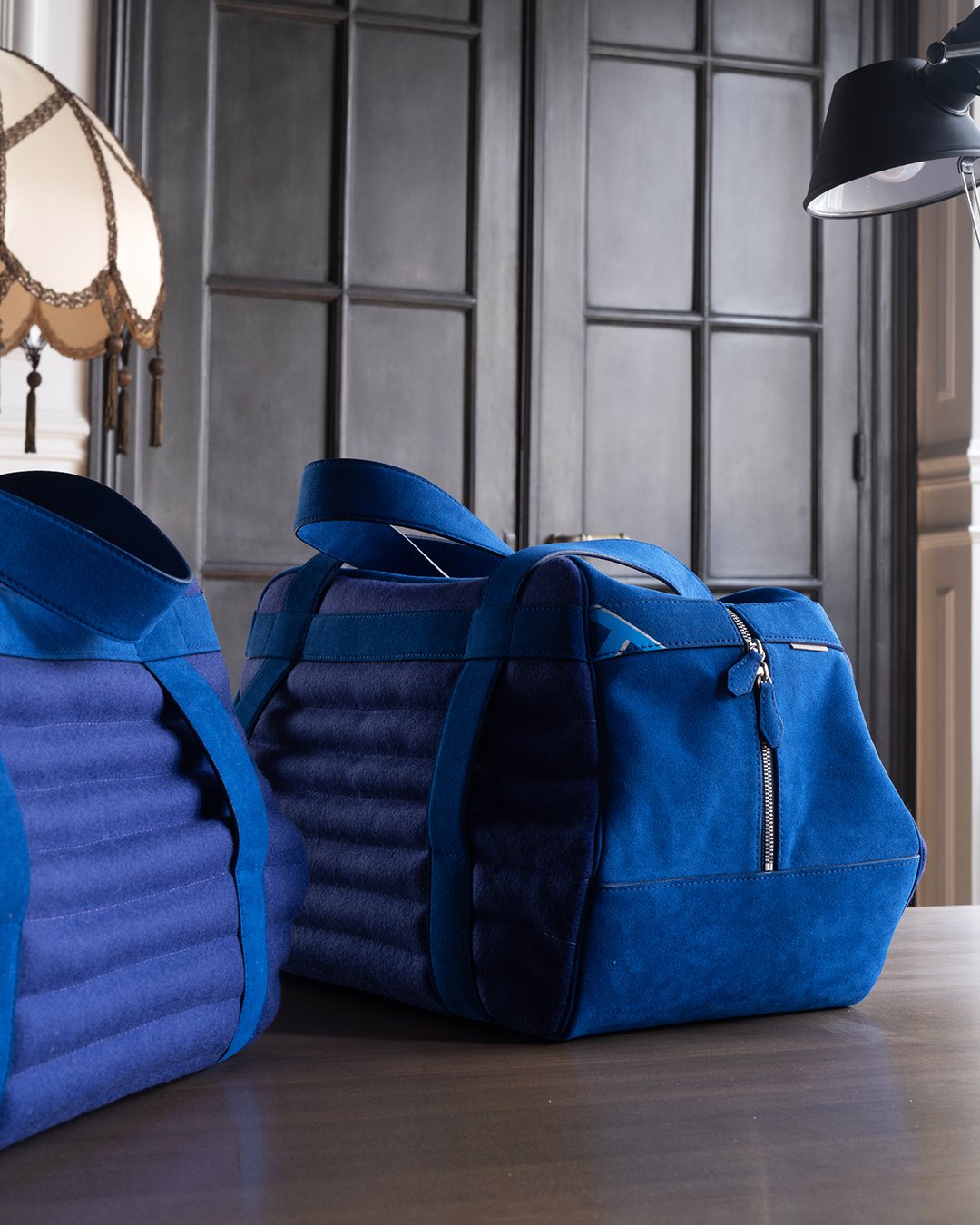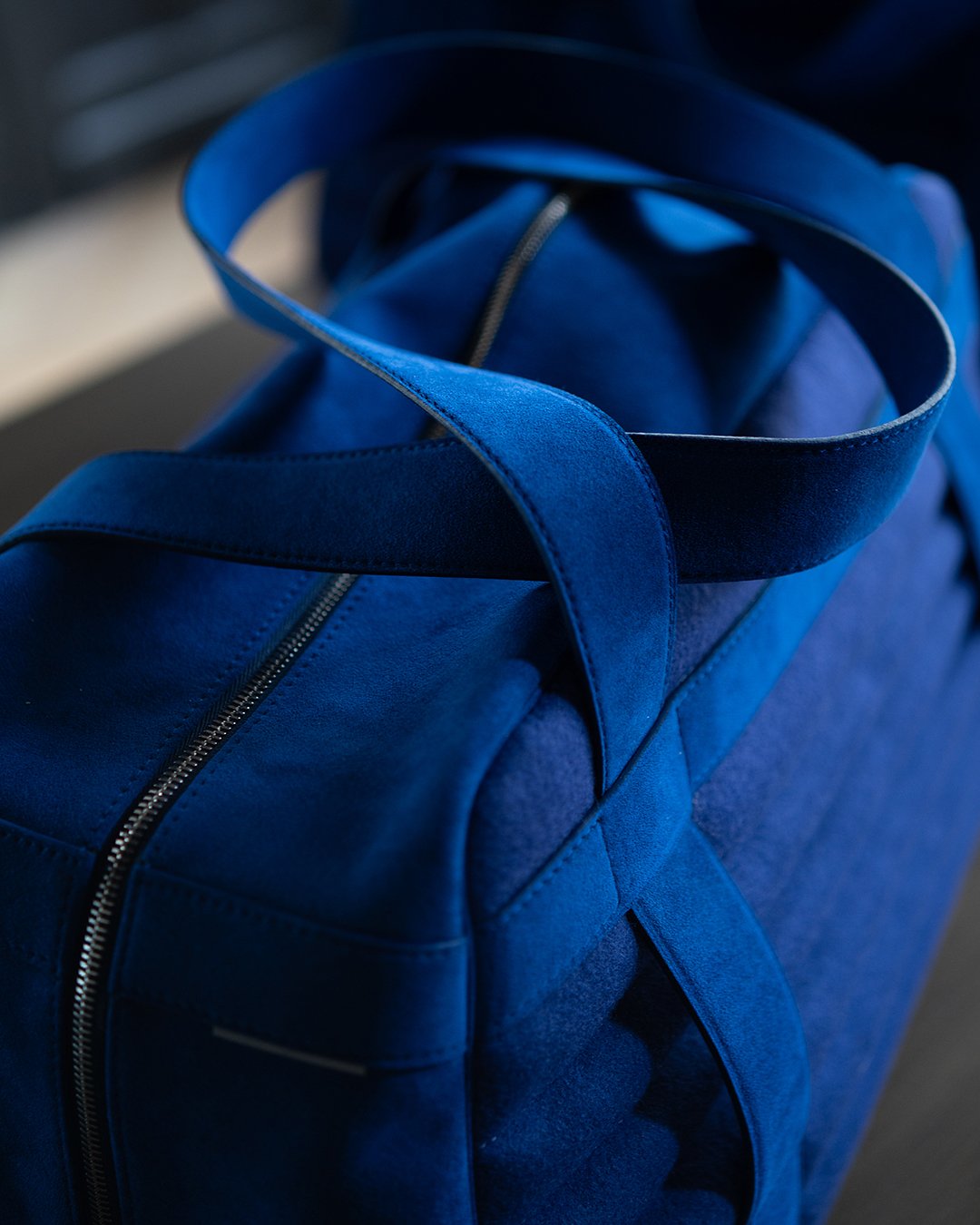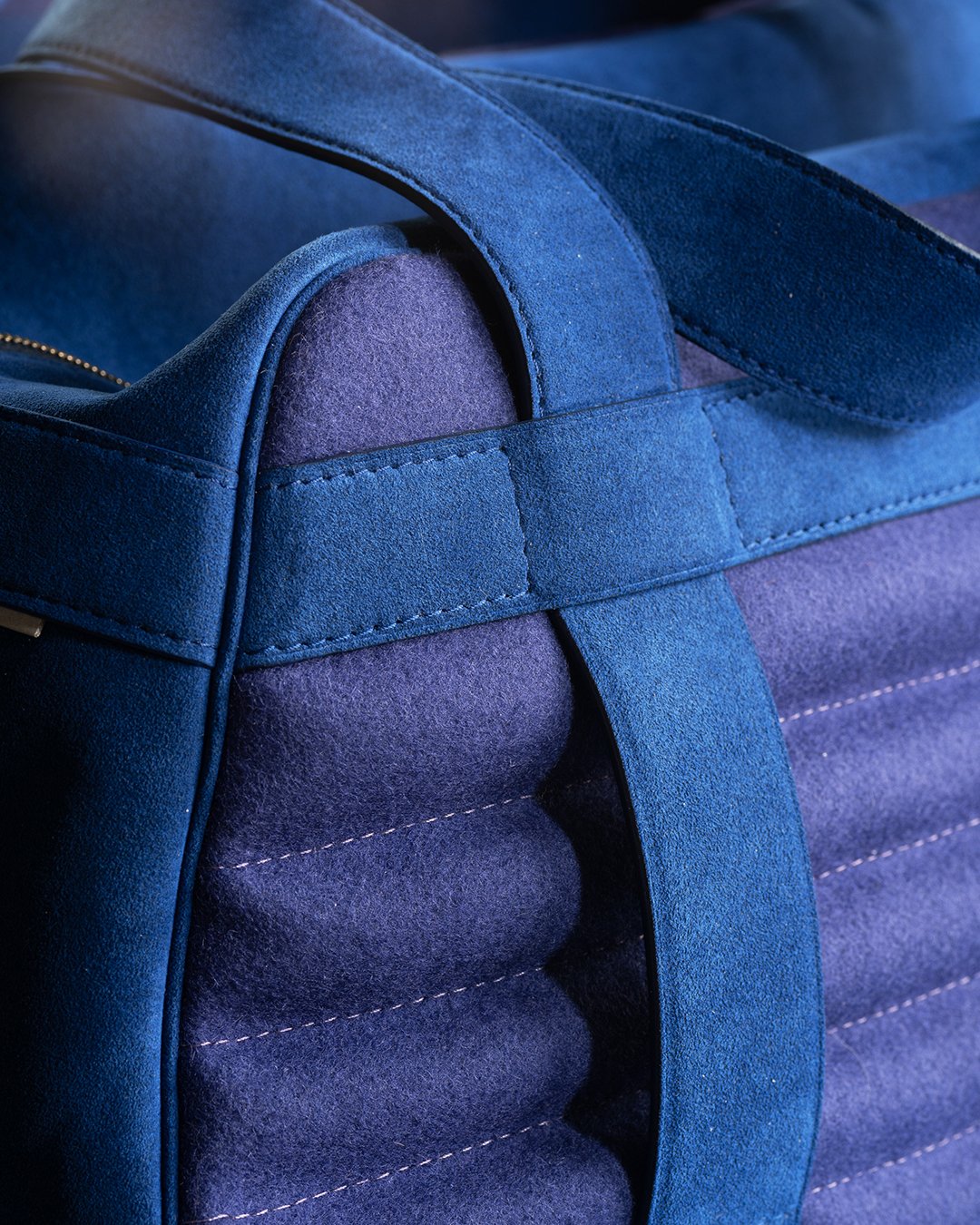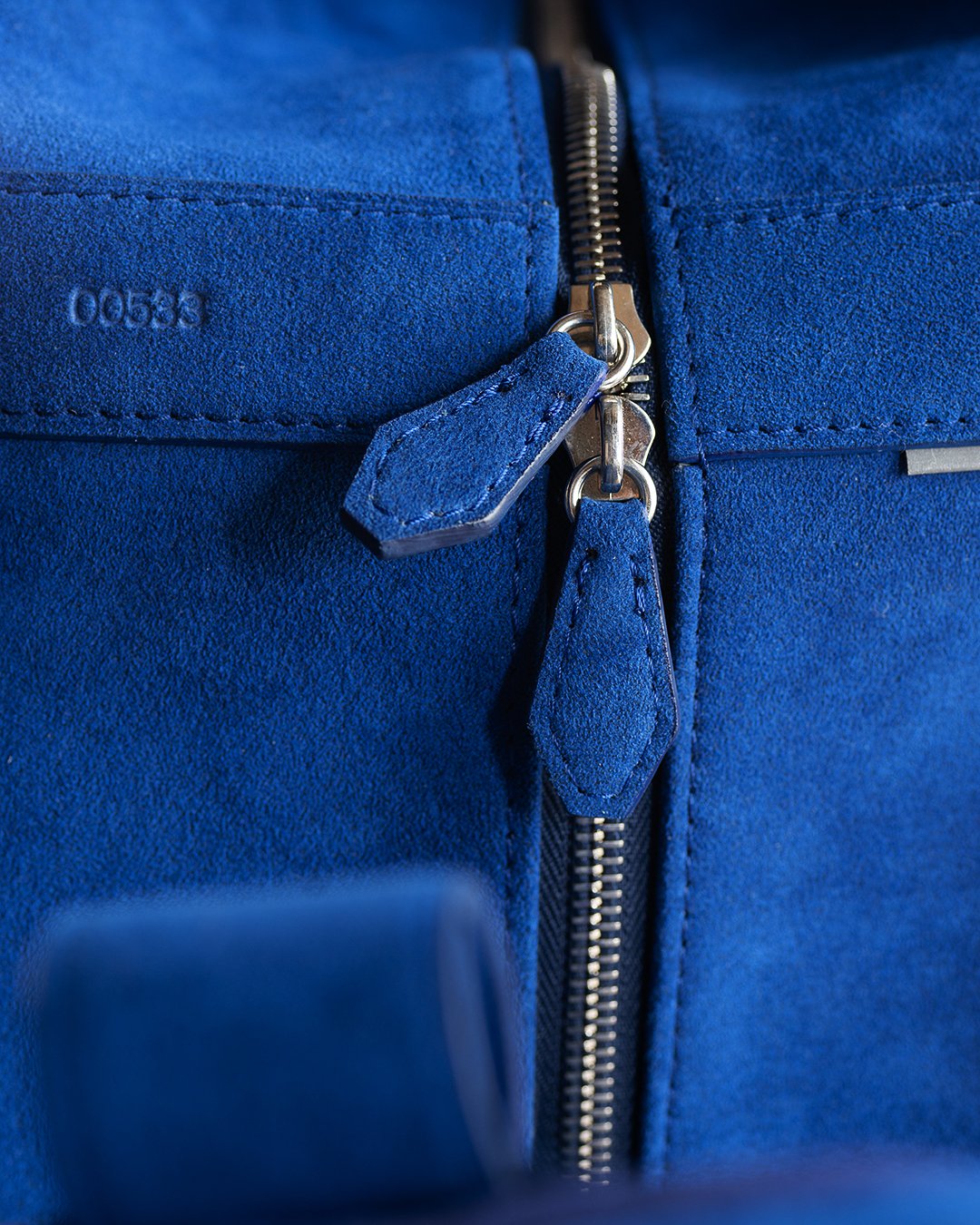HAUTE COUTURE ON WHEELS
The Junior by Zagato is already a special car, even when seen among other Alfas. Built in two distinctive series as GT 1300 Junior Z (1108 examples from 1969 to 1972) and GT 1.6 Junior Z (402 examples from 1972 to 1975), it was the child of the ever happy marriage between Alfa Romeo and Zagato, delivered by Ercole Spada in a mix of known traits and innovative features; the signature “Coda Tronca” for that abrupt rear end, generous glass house and a full front end width headlights cover in plexiglass, cleverly mimicking the classic scudetto as a radiator intake. Having a strong in-house competition in the form of the GT by Bertone, Zagato chose not to lure its buyers by offering more, but… by offering less. A reworked interior with the bare essentials for spirited travels and just two seats meant the car was lighter, therefore faster, making it one of the most rewarding and best driving cars of its time. Enough to convince 1500 customers to pay the approximately 25% premium over a similarly powered GT.
So what happens when this funky ‘70s Italian concentrate undergoes a transformation inspired by the French haute couture? Meet an even more distinctive example of the Junior Zagato, resplendent in its discrete silver, yet harbouring a secret not susceptible from the outside: a totally revamped interior – a fusion of blue and purple velvet that whispers of spirited class.
The making of this remarkable one-off project lies in the hands of the artisans from Tristan Auer Car Tailoring under the guidance of Tristan Auer, renowned for his imaginative approach to interior design, who has made a name for himself by reimagining classic automotive interiors with the typical French sophistication. With a portfolio spanning from Citroen to Lamborghini, and the occasional yacht or private jet, Tristan's transformative touch has breathed new life into several vintage cars, matching luxury with functionality.
The owner commissioning this Junior Zagato, aconnoisseur of automotive beauty, recently took a drastic approach in managing his collection: quality over quantity. He was looking now to curate a smaller fleet of cars, but only those that truly captivate his heart - with a preference for those capable of delivering pure driving pleasure. Enter the Alfa! And his strongest wish in regards to this Junior Zagato? A clear departure from the original dark ambiance of the car's interior.
With the goal of creating a perfectly usable, but also durable driving habitat and also ultimately looking to improve the owner’s comfort, Tristan's artisans envisioned for him a sanctuary that reflected his penchant for bold hues and tactile luxury. But there was a unique twist – he preferred driving barefoot, a detail that added a layer of intimacy to the customization process.
The creative process began with the imagery of bright blue racing shoes, then piecing together elements of comfort, style, and acoustic refinement (thermal and sound insulation known to be Achilles’ heel in the original Junior Z). From the first proposal sketches it was clear that a strong blue of Pierre Cardin inspiration will be the dominant hue, laying the foundation for an interior that goes beyond mere functionality to become an expression of the owner’s personal taste and also the refinement of the artisans executing it, as cosy as one's inner driving sanctuary can be. 8 square metres of Nepalese wool moquette were used just for the floors of the car, resulting in a thick, hand-tufted carpet in deep blue embracing the lower part of the cabin, inviting tactile exploration with every step. More so, if bare foot.
This unusual inner 3D canvas of the minimalistic vintage automotive interior became an expanse of blue Alcantara in the areas most susceptible to hard use, interwoven with the richness of purple wool for added softness. But luxury in such a transformation process doesn't have only visual results – it expands to auditory experiences too. To elevate the acoustic experience within the cabin, in the re-trimming process of the dash an central console a special material was introduced, infused with smashed aluminium fibres, enhancing sound insulation while adding a unique texture to the ambiance.
Every new stitch, every original detail, was meticulously crafted to harmonise with the ethos of haute couture. From the sumptuous velvet upholstery to the matching umbrella behind the seats or the dedicated luggage set, each element is part of a wider bespoke experience, tailored to the owner's desires, as is the case with every single one of Tristan’s creations. The small numbers seen embroidered in the Alcantara? The last digits taken from the chassis number - stiching one’s initials just wouldn’t cut it with the owner’s discrete personality. And as the owner settles into the driver's seat, we can only guess the sum of feelings transcend the mere act of driving, as satisfying as it may be in any Alfa – it probably becomes a symphony of all around sensory delight. One must feel embraced here by the right mix of automotive heritage and personalised luxury.
As tailored made collectors’ cars go - the rarefied world of automotive haute couture - this Alfa Romeo Junior Zagato is a pleasant surprise. An unusual car to start with, if possible made even better by this kind of unusual but still respectful restoration. A gust of fresh artistic expression, demonstrating again the boundless possibilities of customization. It couldn't be more contrasting to what one would define as the typical collector’s car, but it works perfectly: with its silver exterior and a soulful interior bathed in hues of blue and purple, it’s unashamedly a declaration of individuality and style. And I couldn't have expected any less from a French interpretation of an Italian icon. At home both in Milano and in Paris.
Photo gallery courtetsy of Amaury Lappara.



